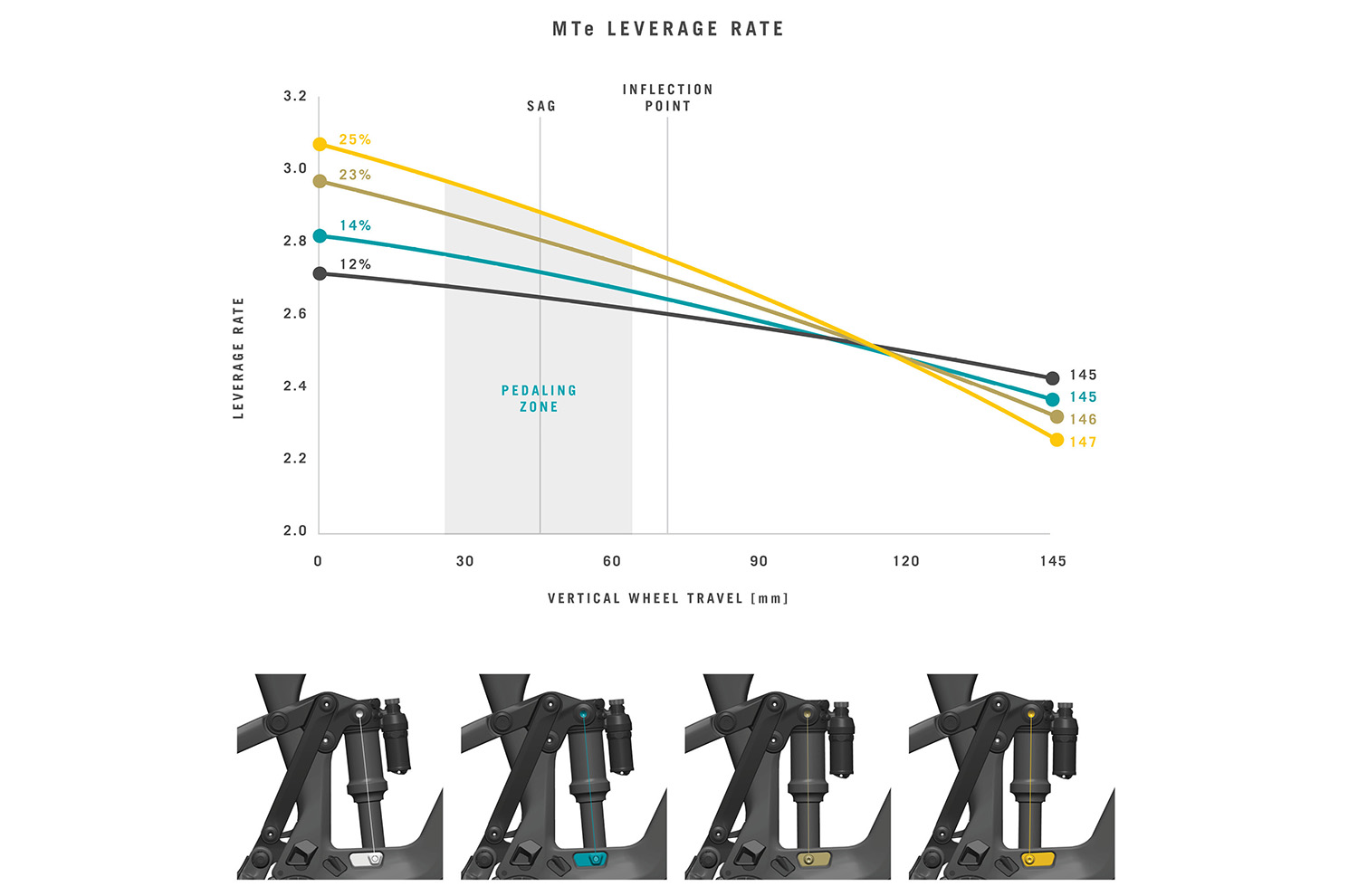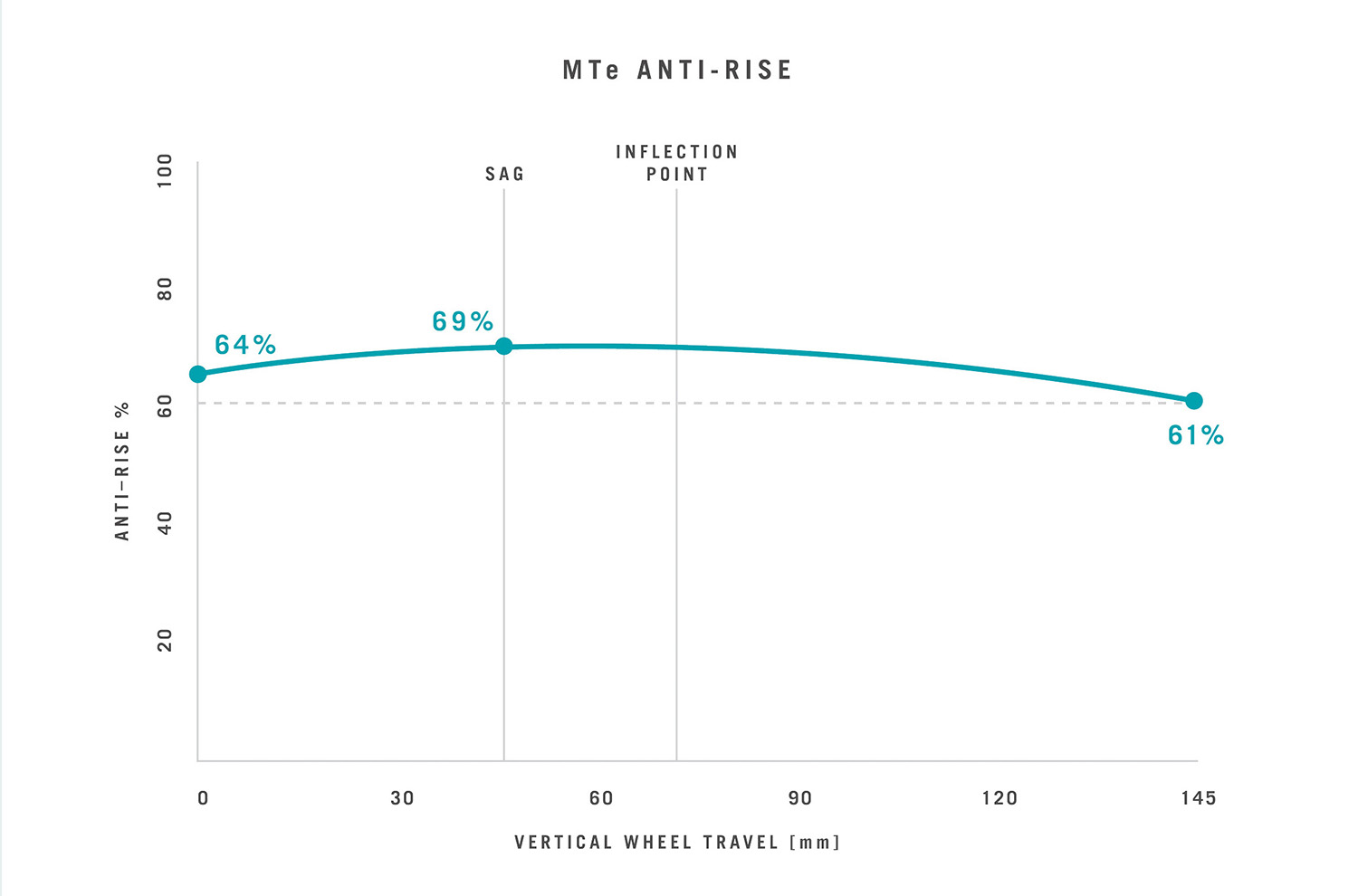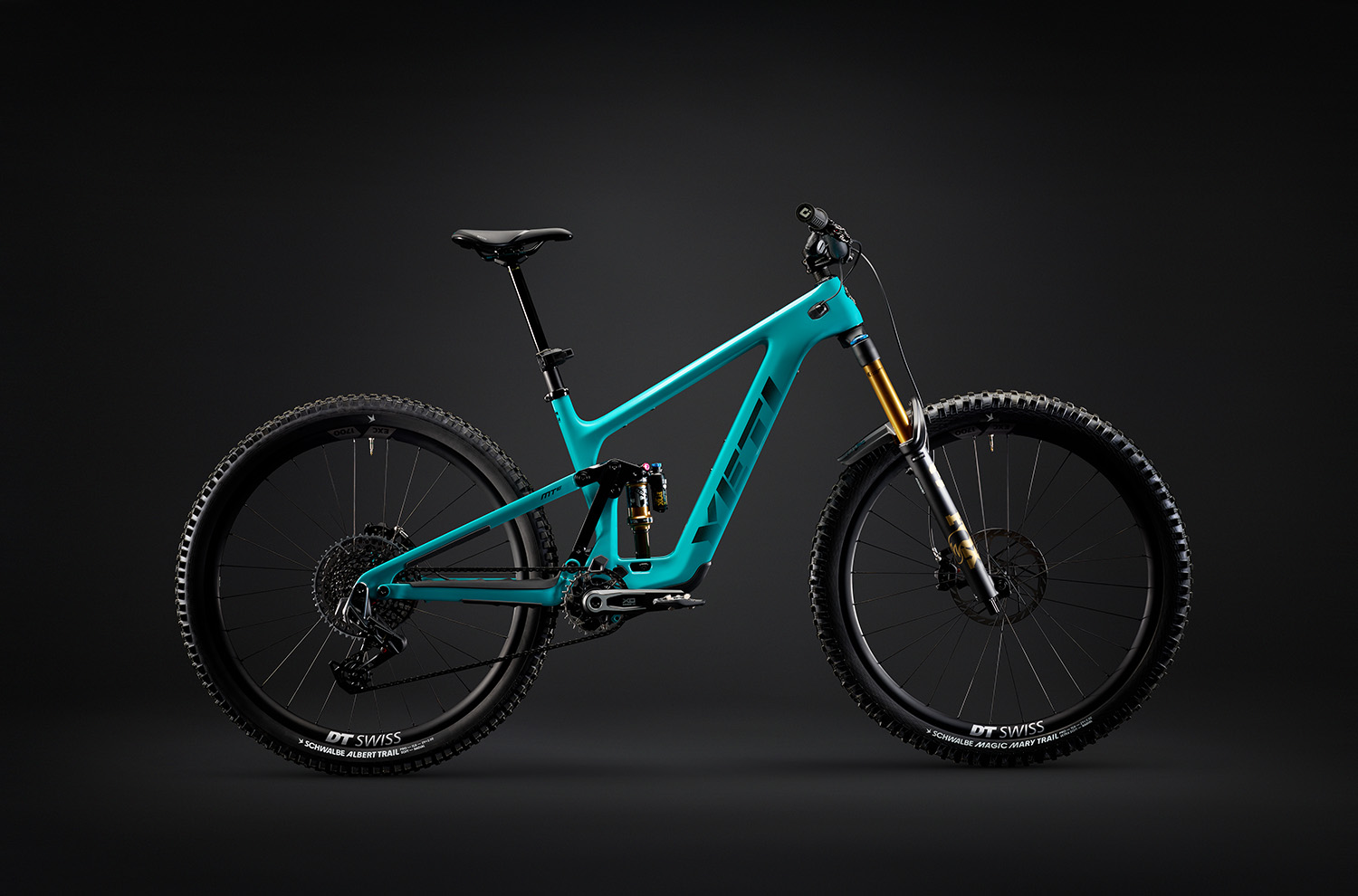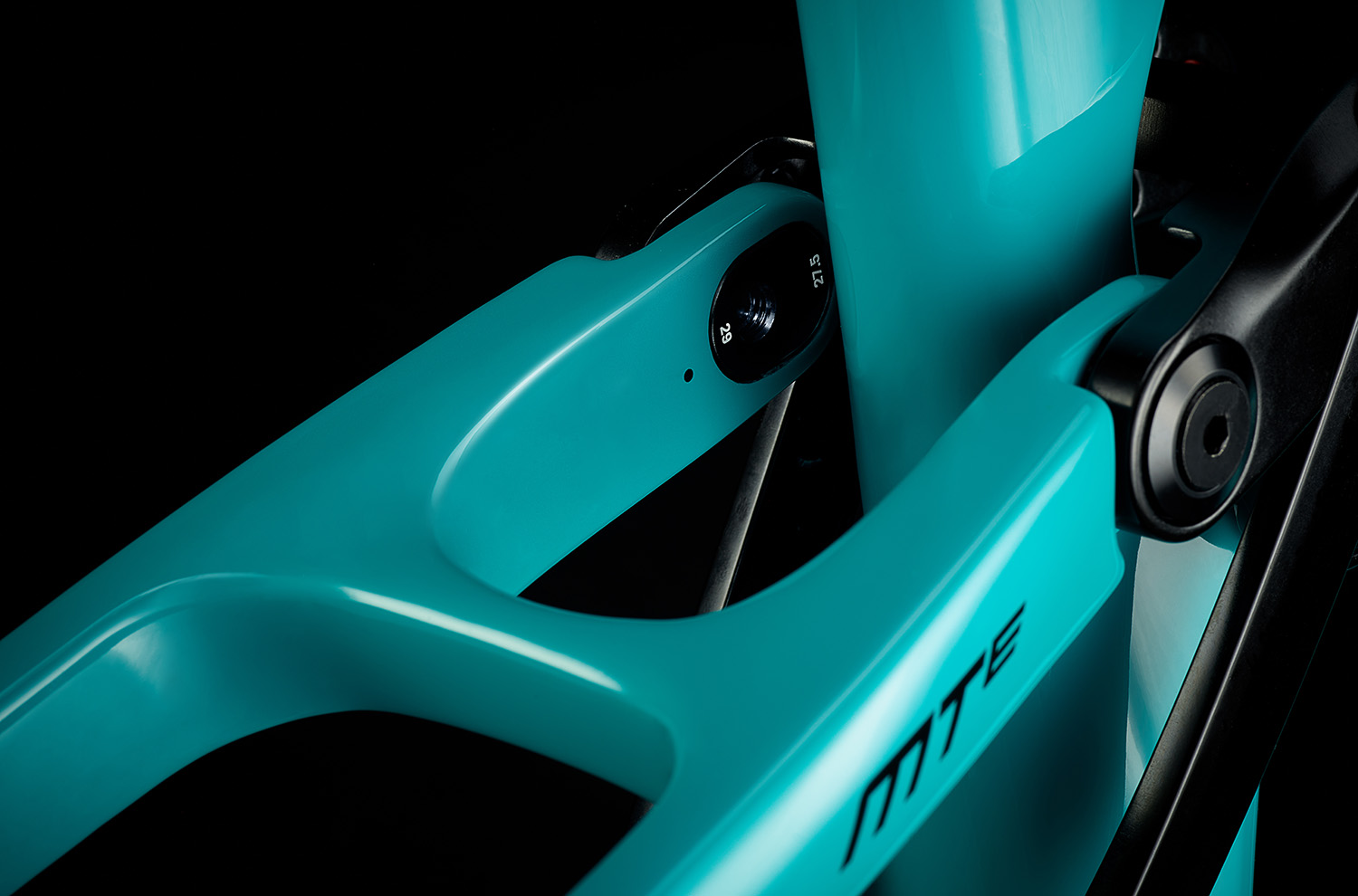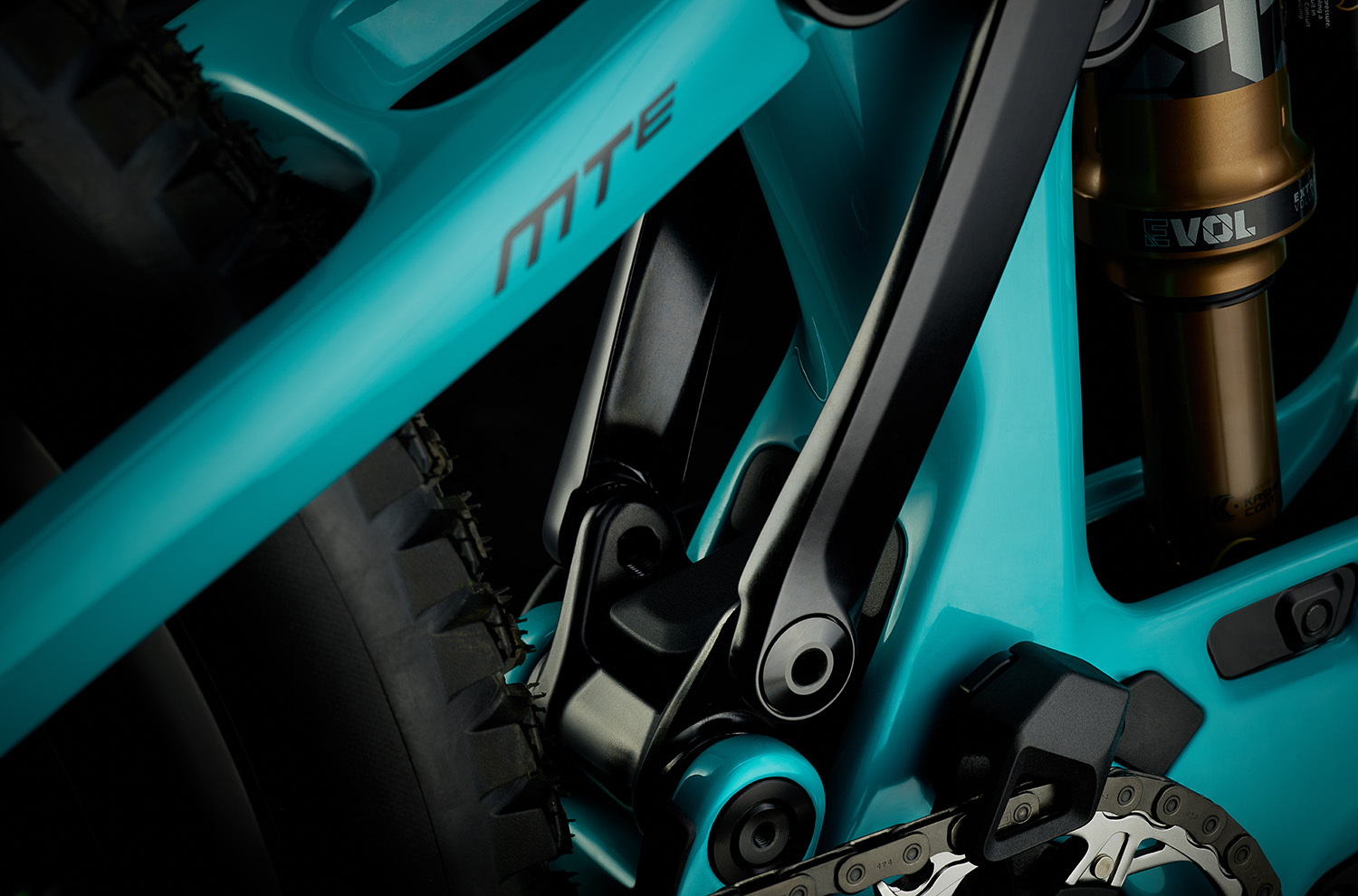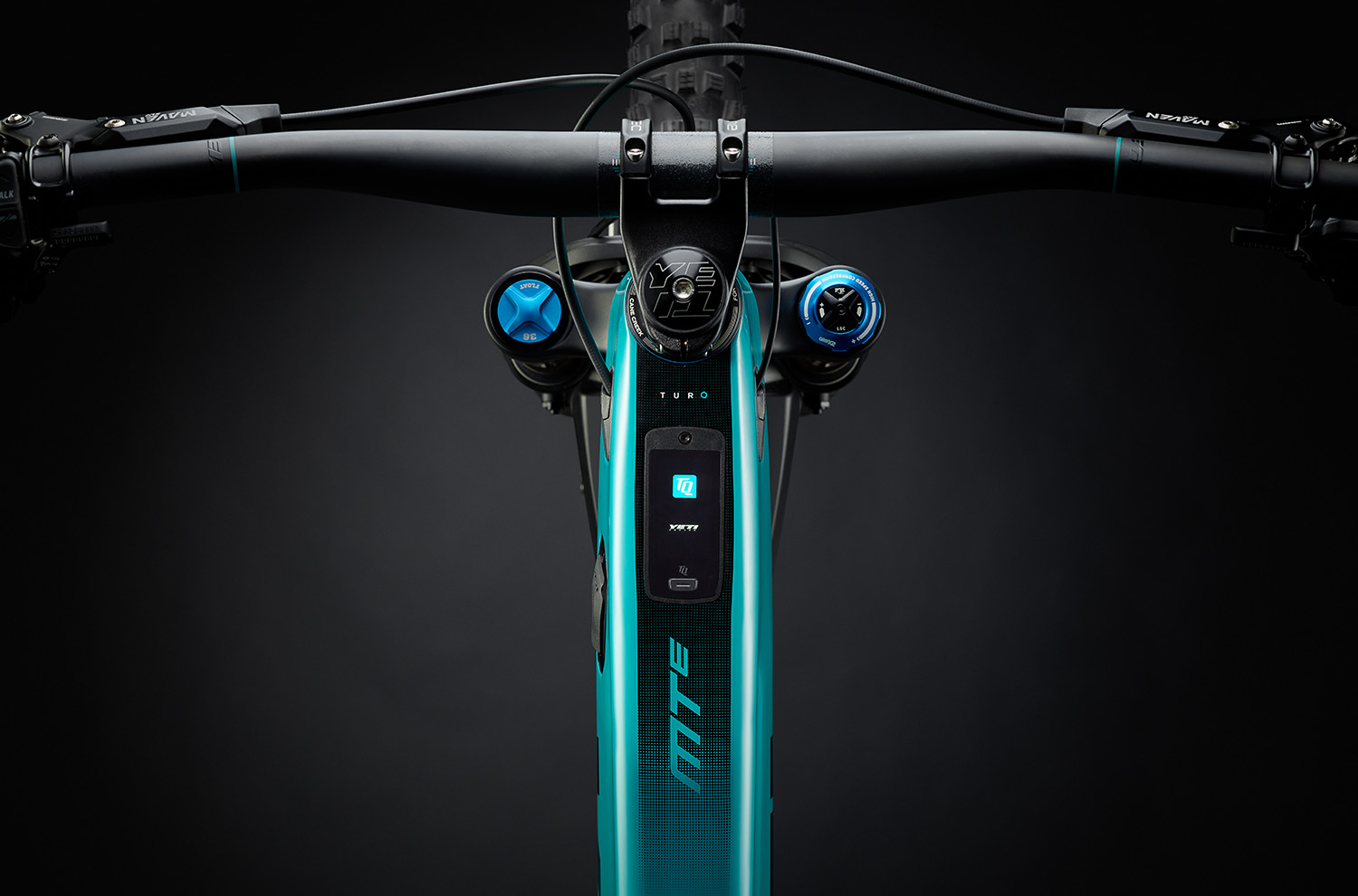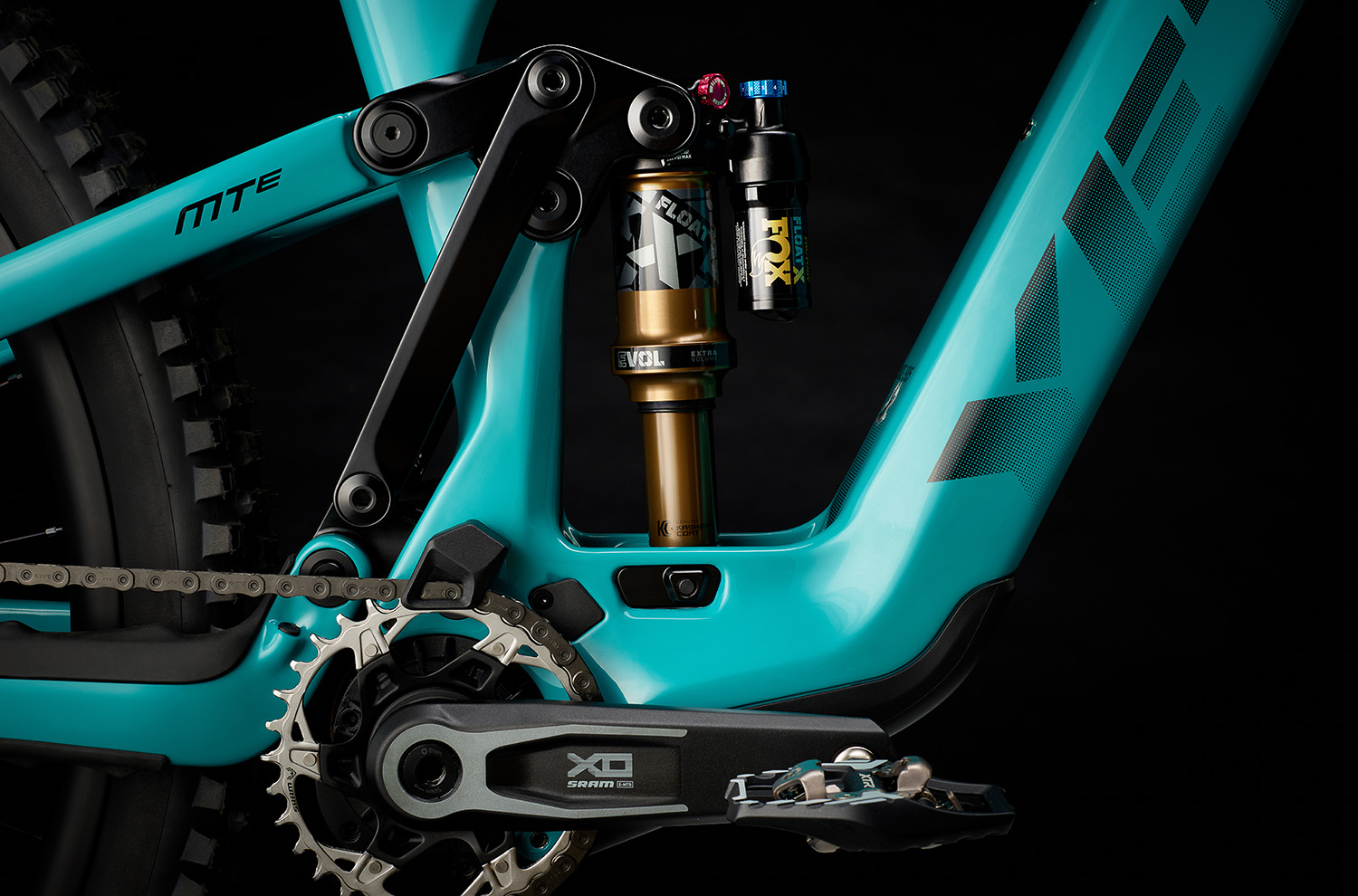Yeti MTe
Wheel Sizes: 29’’ front and rear (mixed wheel compatible)
Suspension Travel:
- Frame: 145 mm
- Fork: 160 mm
Geometry Highlights:
- Sizes offered: SM, MD, LG, XL
- Headtube angle: 64º
- Reach (size Large): 480 mm
- Chainstay length (all sizes): 449 mm
More Specs (click to expand):
Drive System Highlights:
- Motor: TQ HPR60
- Torque: 60 Nm
- Power: 350 W
- Battery: TQ 580 or 290 Wh
- Display: TQ HPR In-Frame Color Display
- Remote: TQ HPR Remote
Frame Material: Carbon fiber
Price: Complete bikes from $9,850 to $14,300 USD
Blister’s Measured Weight: 44.4 lbs (T3 X0 AXS Transmission, Size Large)
Test Location: Colorado
Reviewer: Dylan Wood: 5’10.5”, 160 lbs / 179 cm, 72.5 kg
Test Duration: 3 months
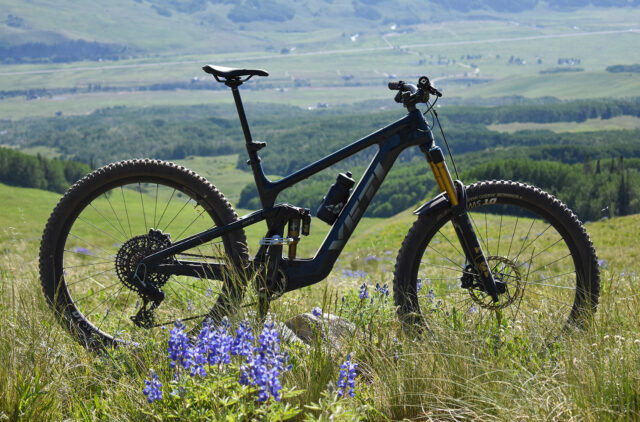
Intro
It’s been almost four years since Yeti launched their first eMTB, the 160E, but today, the new MTe joins their electrified lineup. Designed as a light-assist eMTB that prioritizes a low weight and an intuitive ride over all-out power, Yeti is positioning the MTe as a Trail eMTB that’s meant to ride well first and foremost. But this bike is also the first one on the market with TQ’s new HPR60 drive system. We’ve spent the past 3 months riding the MTe, but before we get into our on-trail takeaways below, let’s get into the specs:
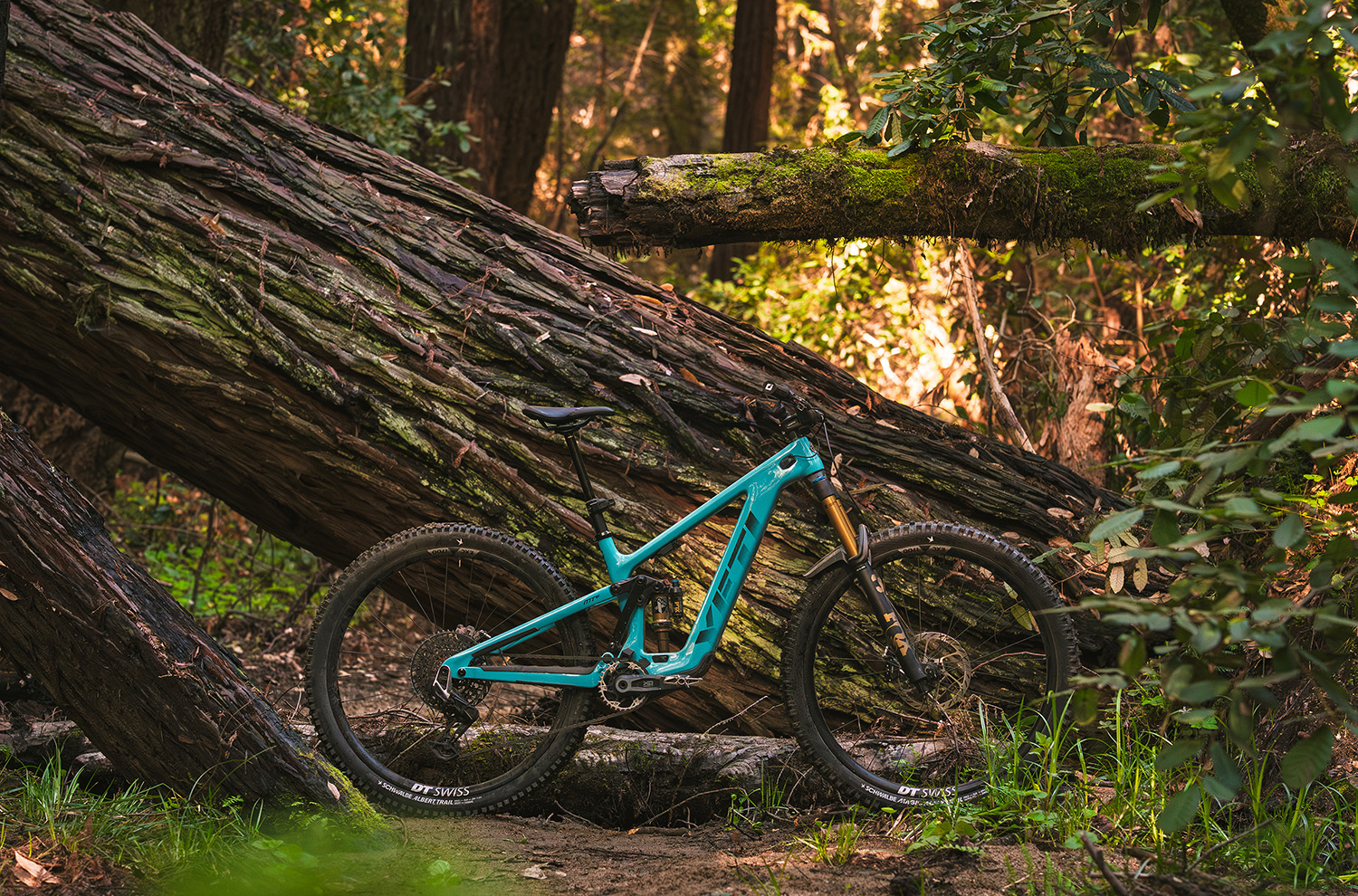
The Frame
Yeti opted for their “Sixfinity” design on the new MTe, which we first saw on their 160E. This is a 6-bar layout driving a vertically mounted rear shock, providing 145 mm of rear suspension travel. While Yeti’s unpowered bikes (except for the ASR) feature their signature “Switch Infinity” suspension design, a motor occupies the valuable real estate where the sliding Switch Infinity assembly is typically mounted, and Yeti has designed Sixfinity specifically for use on their electrified mountain bikes. Similarly to Switch Infinity, the lower “Switch Link” on the MTe moves upward during the first half of the travel, then back downward for the second half. While the MTe frame and suspension layout looks quite similar to the 160E, the suspension kinematics have been tuned specifically for the MTe chassis.
Yeti aimed for a more linear leverage curve with the MTe, with the goal of creating a consistent feel throughout the MTe’s available rear travel. The MTe comes with two pairs of swappable and reversible chips that dictate the position of the lower shock mount, creating four different leverage rates. The most linear setting provides 12% progression, then the next position results in 14%, then 23%, and the most progressive position puts you at 25%. The MTe comes with the chips positioned in the 14% progression setting on builds with the Fox Float X, and the slightly lower 12% position with the T4 build that uses the inline Fox Float.
Because the MTe is a light-assist eMTB, Yeti tuned the suspension to provide more anti-squat than their full-power 160E. As the Switch Link moves up on the MTe, inside the “pedaling zone” of about 25-65 mm of rear travel, the MTe has higher anti-squat numbers to provide better pedaling support. Then, as the Switch Link moves down for the deepest portion of the MTe’s travel, the anti-squat greatly reduces to mitigate things that negatively affect downhill performance, such as pedal kickback.
Consistency and predictability are Yeti’s stated aims for the MTe’s anti-rise. With a very flat anti-rise curve (a bit over 60%), Yeti designed the MTe’s suspension to feel similar throughout its entire travel under braking forces, with the goal of preserving the MTe’s geometry while still providing adequate traction.
The MTe is only available in their high-modulus carbon fiber, which they refer to as “Turq.” This carbon is reinforced with a material called Vectran, a high-performance multifilament like Kevlar, to offer more impact resistance, stiffness, and overall strength. The MTe also has an integrated downtube guard that doubles as an access door for the battery, allowing the battery to be accessed and removed without the need to also remove the motor. There’s also a fender above the lower Switch Link that keeps debris out of this area with lots of moving parts.
An integrated chainguide is also featured, very similar to the one we first saw on the ASR. The MTe uses a ZS44/56 headtube standard to allow for aftermarket headset cups, with headtube alignment notches to ensure proper headset cup positioning. Finally, new for Yeti is a pair of bosses under the top tube of the MTe, designed as an accessory mount to accommodate things like tools or a tube.
Drive System
Yeti partnered with TQ to launch their new HPR60 motor system on the new MTe. Still using the same harmonic pin drive system as the exceptionally quiet HPR50, the HPR60 is designed to retain the quiet and natural feeling of the HPR50 while also offering some improvements in a few key areas.
As the name suggests, the HPR60 has 60 Nm of torque, paired with a max output of 350 watts. In short, this system was designed to improve power delivery and heat-shedding, with cooling fins aiding in the latter. Additionally, HPR60 also comes with an integrated top tube display, with color this time. The HPR60 is controlled via a familiar remote on the left side of the handlebars. TQ makes a range extender for their drive systems that adds 160 watt-hours of battery life and mounts to standard water bottle bosses.

Fit & Geometry
The MTe is available in four sizes, Small through Extra Large, recommended for riders ranging from 5’1” to 6’7”. Looking at the geometry chart, the MTe seems fully modern with a couple of twists. The Large MTe has a pretty middle-ground reach number of 480 mm, paired with a slack-yet-reasonable headtube angle of 64º. The MTe has an effective seat tube angle of 77º, which might be slightly more slack than Yeti’s similar but unpowered SB140, but given that riders will likely spend more time on flatter roads to access singletrack aboard the MTe, this makes sense.
One measurement that stands out is the 449 mm chainstays on all sizes of the MTe. Certainly on the longer side for just about any mountain bike, these long chainstays seem to be an indicator that stability is a priority for the MTe. The stack height of the MTe is at 645 mm for the size Large, which is pretty typical for bikes in this class with 160 mm forks, though if anything, the MTe’s stack is on the slightly higher end of the spectrum, and the long 449 mm chainstays might balance this out a bit by biasing the rider’s weight a bit more forward on the MTe.
It’s also worth mentioning that while the MTe is only available as a full 29er, it can be run as a mixed-wheel setup, too. There are a pair of flip chips that Yeti prefers to call “wheel chips,” where the seat stays meet the upper rocker link. Switching the orientation of these chips allows you to run a 27.5” wheel out back without changing the geometry of the MTe apart from a small change in chainstay length.
The full geometry for the MTe is below:
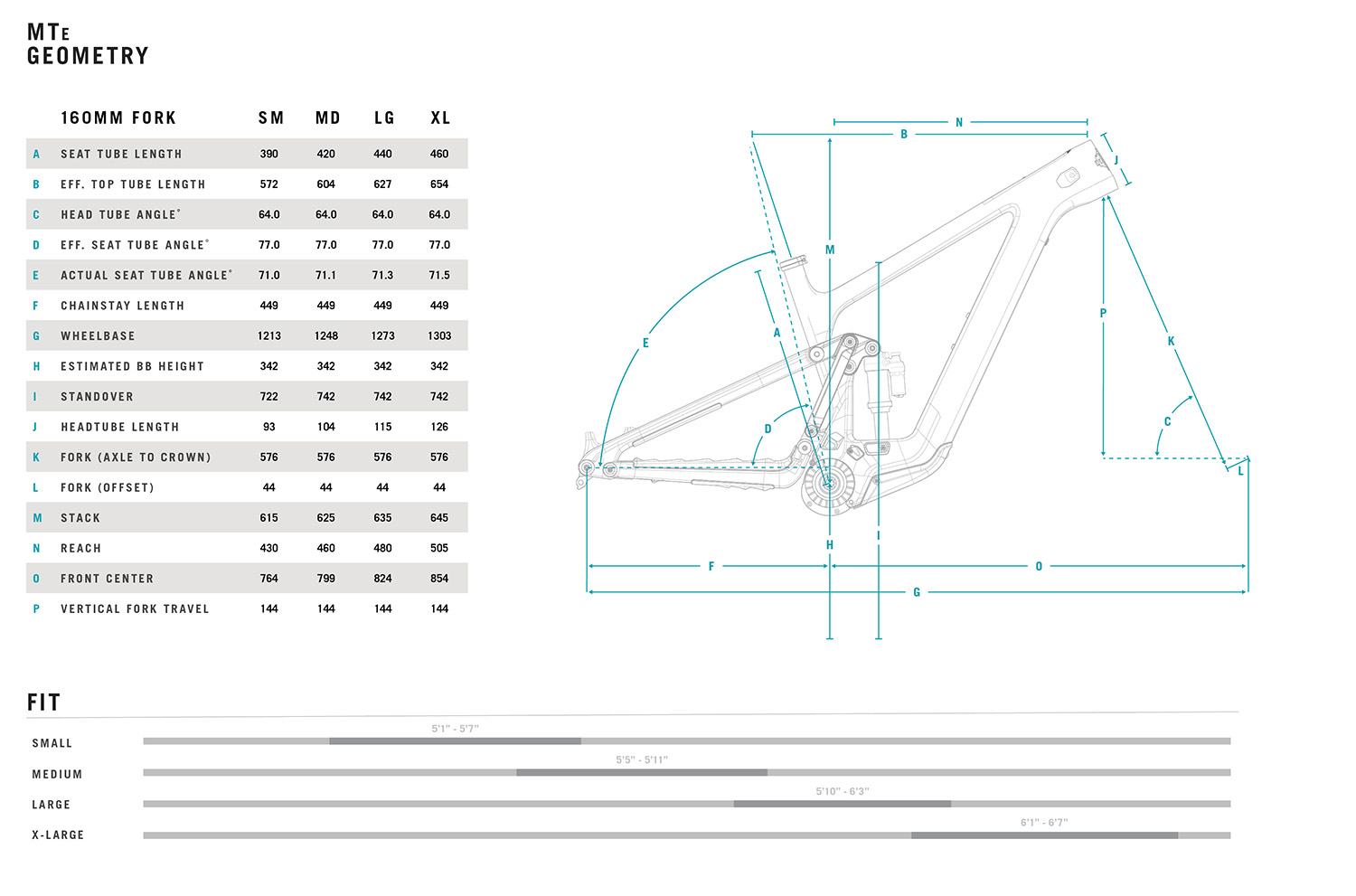
The Builds
Yeti is offering three build kits for the MTe, with the cheaper of the two featuring some pretty burly componentry for the Trail category and TQ’s larger 580 Wh battery. Weight is more of a concern with the top-end T4 XX Transmission build, with Yeti opting to put some lighter components on this build as well as TQ’s lighter 290 Wh battery, with claimed weight savings of about 3 lbs (~1.4 kg) coming from this battery swap alone. Both sizes of the battery will be available aftermarket, and can be swapped on and off the MTe, and there’s also a neat little spot to discreetly mount an Apple AirTag or Tile Tracker on the top of this battery.
All of the builds get SRAM brakes and shifting, with the base C2 build featuring SRAM’s new Transmission 90 drivetrain. Braking power certainly seems to be a priority here, with SRAM Maven brakes coming on the heavier two build kits, and the slightly lighter SRAM Motive brakes coming on the top-end T4 build.
The C2 and T3 builds of the MTe both get Fox’s Float X rear shock, while the lighter T4 build is specced with the inline Fox Float rear shock. All builds see Fox’s new 36 fork, with the Yeti opting to use the Grip X damper in the T4’s fork for weight-saving purposes instead of the Grip X2 damper that the T3 gets.
The C2 and T3 builds also come with Schwalbe’s new radial ultra-soft (front) and soft (rear) tires, with maximizing traction being a big goal here. The lighter T4 build saves some grams with Maxxis EXO-casing tires instead. Every build comes in under 45 lbs, with the heaviest C2 build weighing a claimed 44.3 lbs / 20.09 kg, the T3 coming in at a stated 43.3 lbs / 19.64 kg, and the top-end T4 build sitting at a significantly lighter 38.6 lbs / 17.5 kg. Additionally, all build kits get RockShox’s new Reverb AXS B1 dropper post, in pretty long drop lengths relative to each size, too. It’s also worth mentioning that every build kit comes with Yeti’s new Carbon E-Routing handlebars, which were specifically designed to internally route the thin cable that connects TQ’s HPR remote to its drive system, resulting in a sleek look in the cockpit.
The full build details are as follows:
- Drivetrain: SRAM Eagle 90 Transmission
- Brakes: SRAM Maven Bronze (200 mm Centerline rotors)
- Fork: Fox 36 Performance (160 mm)
- Shock: Fox Float X Performance
- Wheels: DT Swiss E1900 Alloy 30 mm
- Dropper post: RockShox Reverb AXS B1 (SM:150 mm, MD:175 mm, LG/XL:200 mm)
- Drivetrain: SRAM XO Eagle AXS Transmission
- Brakes: SRAM Maven Silver (200 mm HS2 rotors)
- Fork: Fox 36 Factory Grip X2 (160 mm)
- Shock: Fox Float X Factory
- Wheels: DT Swiss EXC1700 Carbon 30 mm
- Dropper post: RockShox Reverb AXS B1 (SM:150 mm, MD:175 mm, LG/XL:200 mm)
- Drivetrain: SRAM XX Eagle AXS Transmission
- Brakes: SRAM Motive Ultimate (200 mm front / 180 mm rear HS2 rotors)
- Fork: Fox 36 Factory Grip X (160 mm)
- Shock: Fox Float Factory
- Wheels: DT Swiss EXC 1501 Carbon 30 mm
- Dropper post: RockShox Reverb AXS B1 (SM:150 mm, MD:175 mm, LG/XL:200 mm)
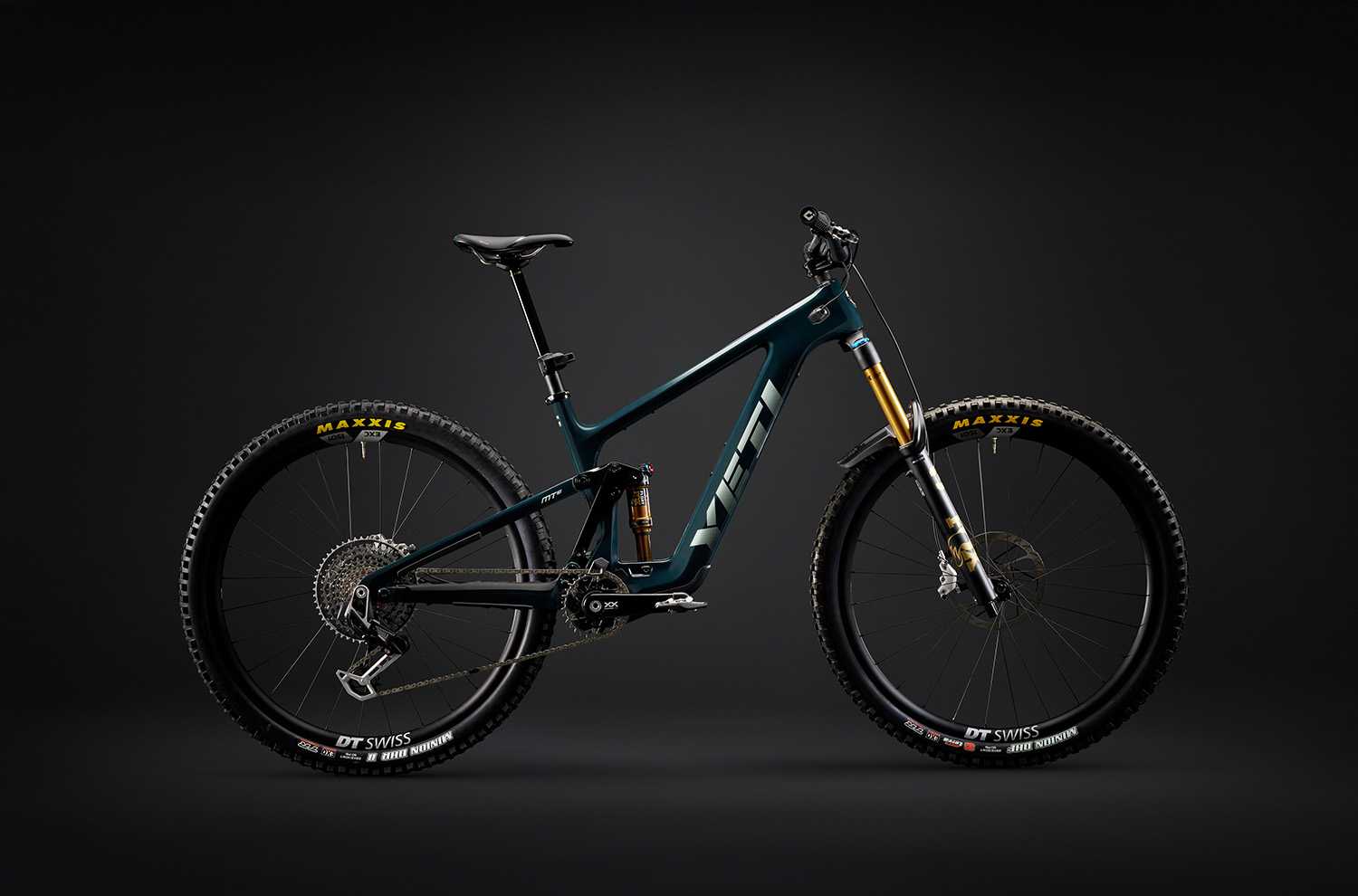
Full Review
Dylan Wood (5’10.5”, 160 lbs / 179 cm, 72.5 kg): The MTe is only Yeti’s second eMTB, and their first without a full-power drive system. With design cues from their relatively long-standing 160E and similar-travel but unmotorized SB140, I was curious to see how the MTe would perform compared to other Yetis, as well as other bikes in its class. After three months aboard the MTe, it’s proven to be a pretty special bike.
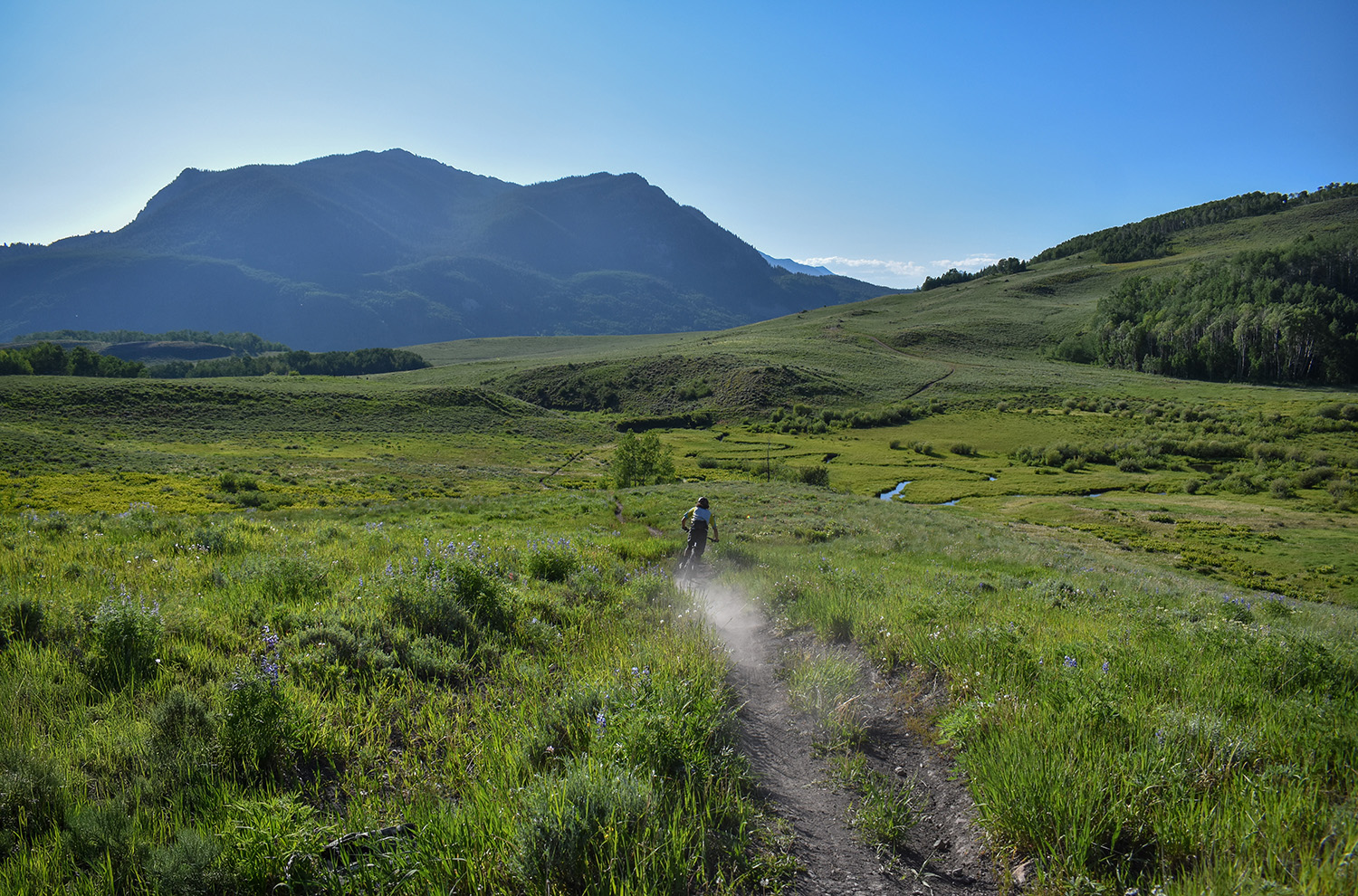
Fit & Sizing
At 5’10.5” or 179 cm, Yeti has me right on the bubble between the Medium and Large for their recommended sizing for the MTe. But, given that I find myself preferring bikes with a reach number around 475-480 mm for the terrain I usually ride, combined with my riding style, the Large MTe turned out to be an excellent fit with its reach of 480 mm.
My first few pedal strokes aboard the MTe came with a familiar, comfortable fit that I’ve come to expect from a modern All-Mountain bike. I didn’t feel too stretched out in the MTe’s cockpit, yet I was also in an aggressive enough pedaling position to put some power into the TQ HPR60 motor when needed. If this were a mountain bike without pedal assist, I think I’d find myself preferring an effective seat tube angle a bit steeper than the MTe’s 77º (78-79º tends to be my sweet spot). But, since this motorized eMTB helps me keep my speed up faster than normal, and since having a motor allows me to access more trails via flatter roads rather than driving them, I am happy with the MTe’s ability to balance climbing performance on both flat roads and steep, technical trails.
One thing that certainly caught my attention on the MTe’s geometry chart was its long, 449 mm chainstays. Pair this with a slightly higher-than-average 635 mm stack height for the Large MTe, and I was curious how the fore-aft weight distribution on the MTe would feel. I prefer lower stack heights in general because I find that they encourage me to get my weight a bit farther forward on the bike, a feeling I find helpful in corners. Subsequently, I like to run the stem pretty low on the steer tube of most of my bikes. However, I found that the MTe’s long chainstays did a good job of inherently getting my weight far enough forward, and I preferred the MTe’s stem about halfway up the steer tube — higher than normal for me.
Additionally, I found myself with plenty of room with the 200 mm SRAM Reverb AXS B1 dropper post while running my seat height of 765 mm. Now, this only gave me a spare 1.75 cm to lower the dropper before it hit the seat collar, so folks with a seat height below ~748 mm will likely need a shorter dropper on the Large MTe. But, given that I’m on the shorter end for the Large MTe anyway and 200 mm is a generous amount of travel to start with on a stock dropper, I have no complaints here.

Climbing
The MTe offers impressive traction on the uphills, making it a very capable technical climber. Add the TQ HPR60 drive system into the equation, and you have a relatively lightweight eMTB that can cover a lot of ground quickly and can also allow you to stay on the bike for everything but the steepest, most demanding climbs.
The MTe has very plush, traction-rich suspension, particularly when compared to other ~145 mm travel MTBs. Pair this with a grippy Schwalbe Albert Trail Pro 2.5 Radial Soft rear tire, and the MTe offers exceptional technical climbing ability. Its rear wheel does an excellent job of staying in contact with the trail on technical bits. Plus, with the HPR60 drive system that tops out at 350 watts, I rarely experienced the rear wheel spinning out on steep, loose trails, even in the highest assist setting — something that often isn’t the case on full-power eMTBs.
If this were an unpowered mountain bike, it would be a pretty sluggish one. But throw a motor in it, and I have absolutely no complaints regarding how active the rear suspension is. The HPR60 drive system also excels in technical climbing, and it’s a great match for the MTe’s suspension design. The increase to 60 Nm of torque is noticeable, and I was able to climb truly difficult sections of trail on the MTe that I struggle getting up on other drive systems — even full-power ones. And while HPR60 might not provide as much power as a full-power system like Bosch CX, it certainly provides noticeable assist to the MTe — more on this later.
I also really appreciate that Yeti put a pretty aggressive lockout tune on the Float X used on the MTe. When pedaling up paved paths or streets, I appreciated the extra efficiency, though I never felt the need to use it on trails.
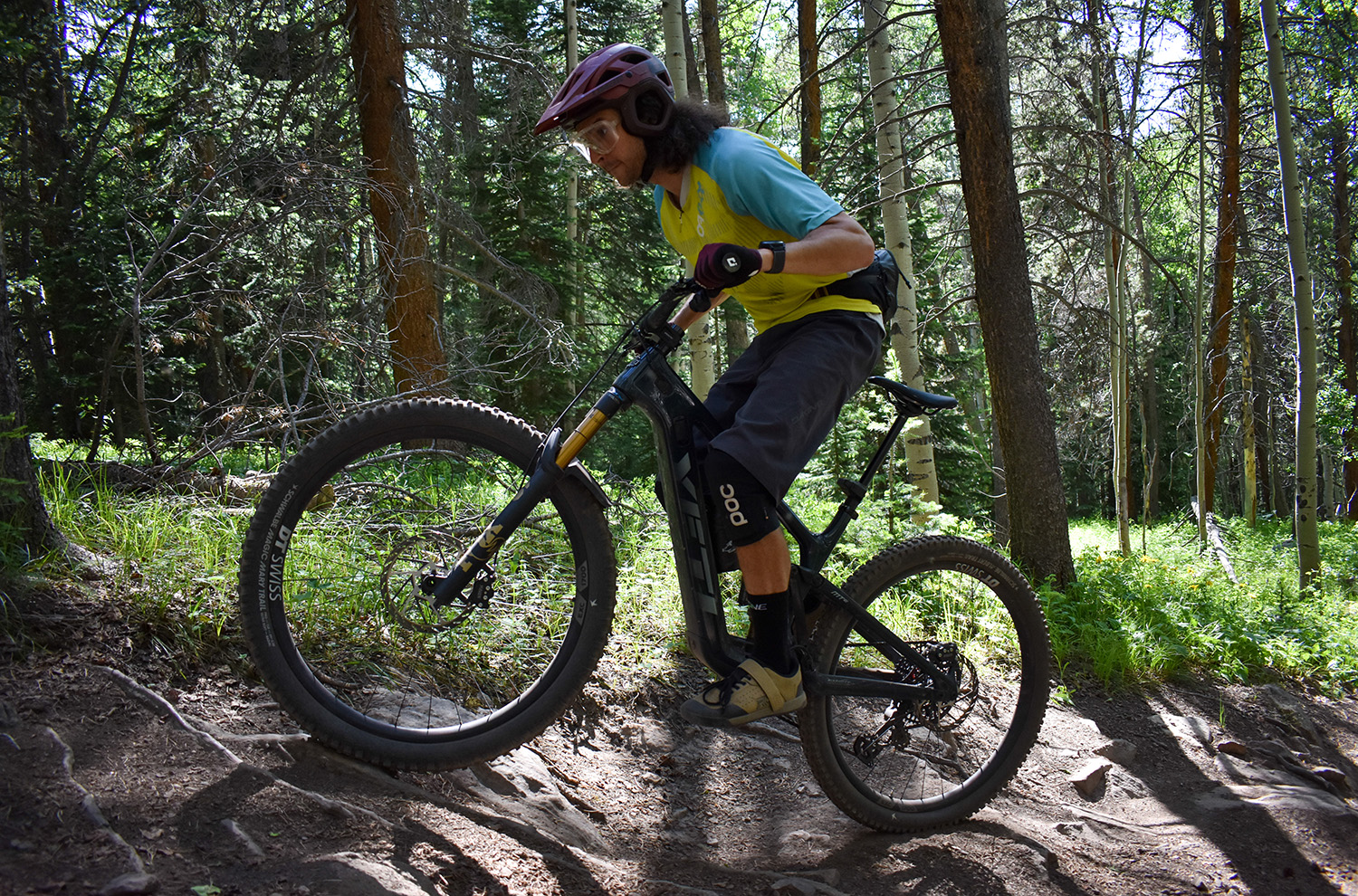
Descending
The MTe continues to provide stellar traction on the way down, resulting in a unique eMTB experience, especially for this class. Add in some capable geometry, and you have a very downhill-capable bike.
If Yeti replaced all the “MTe” branding on this bike and replaced it with “160e” and told me it was a 160e with an HPR60 drive system, I totally would have believed them. The MTe descends incredibly well for how much travel it has. Its suspension is incredibly active, forgiving, and plush, providing stellar traction on the way down. Folks who have ridden unpowered Yetis in the past and have noticed their demanding, sporty feel (like me) will be surprised at just how different the MTe’s suspension feels. It doesn’t take much speed to come alive and does an excellent job of making the terrain below disappear, allowing the rider to sit back and let the MTe hover over chunky terrain below. Even while under braking forces, the MTe remains composed and engaged with the trail, providing loads of confidence. The MTe reminds me a lot of an Enduro bike in this regard, and certainly descends better than its suspension travel numbers might suggest.
Plus, the MTe has pretty long, low, and slack geometry that also aids in it feeling stable on the descents, especially at high speeds. The MTe has a large sweet spot, allowing the rider to move their body weight around between the bike’s wheels without losing traction on either end. The MTe’s long chainstays encourage, without forcing, an aggressive riding style, keeping ample weight on the front wheel, even in loose corners. Its long reach and subsequently long wheelbase do a great job of eating up terrain under the rider, and its 64.5º head tube angle is proving to be a sweet spot for me, providing very stable steering at high speeds without feeling “floppy” at slow speeds or in flat corners.
The only times I found the MTe being outperformed by similar eMTBs in its class were in steep, tight terrain as well as on mellow, playful trails. The MTe’s long chainstays can be a bit of a handful here, where I tend to try and steer the bike with the rear end, flicking it around corners. Additionally, the MTe’s exceptionally plush suspension also means that it’s not very responsive. Bikes like the Pivot Shuttle SL/AM do a much better job of generating speed over rollers and through corners by pumping the bike.
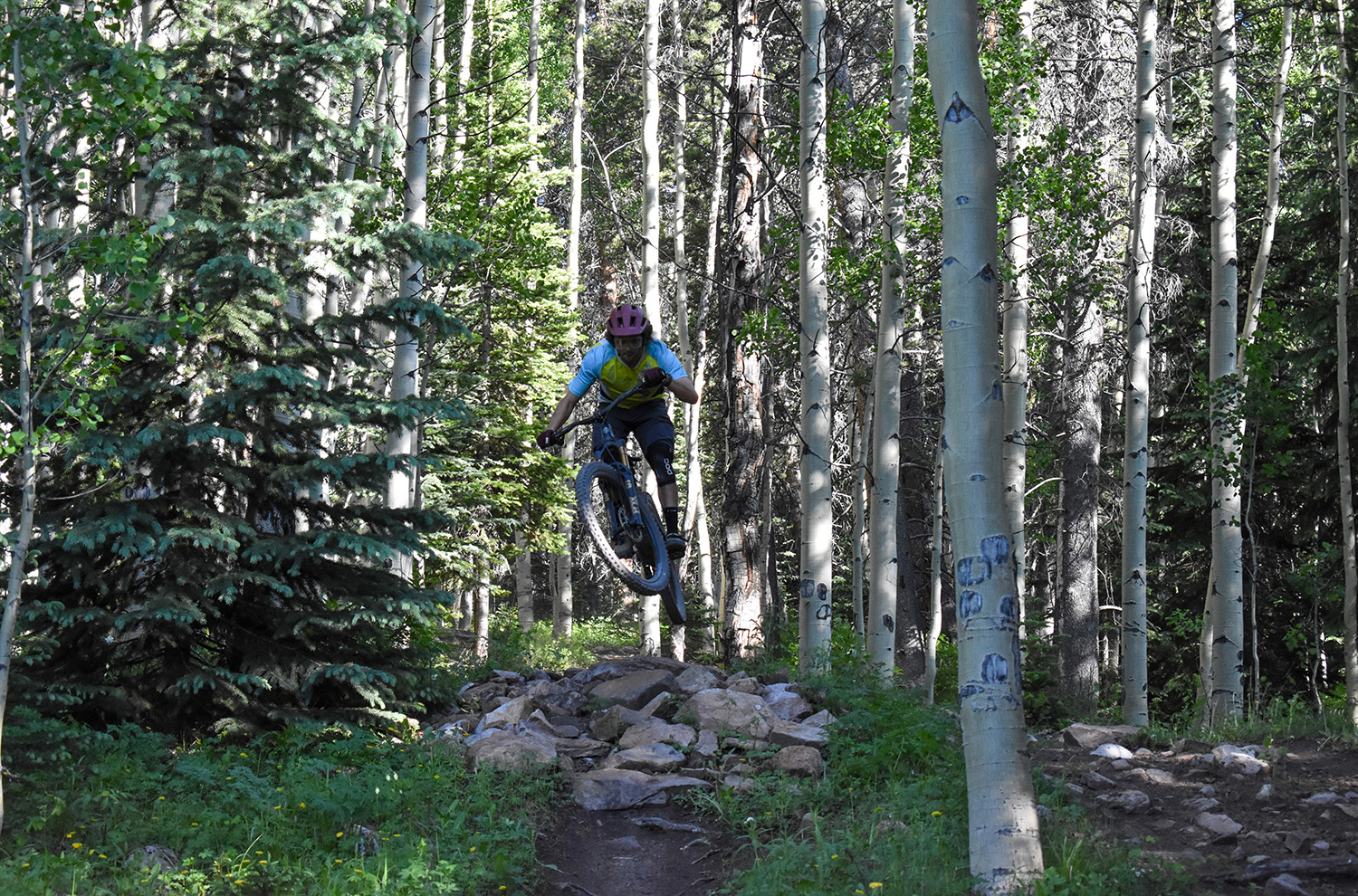
But, this is also one of the places where I found that swapping out the rear wheel to a smaller 27.5” wheel is useful. With a smaller rear wheel, the MTe feels more eager to turn more quickly around tight switchbacks. Additionally, I found it easier to get my weight further back in steep terrain while running the MTe in a mixed-wheel configuration, with the smaller rear wheel counteracting the MTe’s longer chainstays. I wouldn’t say the MTe felt much more playful with a smaller rear wheel, though — folks looking for something more engaging have better options with more efficient suspension, though these bikes do not provide as much traction as the MTE. It is also super easy to swap the wheel flip-chip on the MTe, as the bolts securing these chips do not need to be fully removed from the frame for the chips’ positions to be reversed.
The MTe’s four different leverage curve flip chip positions are certainly worth toying with. I found the most linear positions (12% & 14%, the two furthest forward) to be most effective when riding steep, chunky terrain where you want the rear suspension to be most active, especially deeper in the travel. I also think these positions will be best for riders who prefer to let their suspension do most of the work under them, taking a more passive approach to riding.
In the more progressive positions (23% & 25%, the two furthest back), the MTe begins to reward a more dynamic riding style. The MTe is still quite plush in the first half of its travel, but does ramp up noticeably deeper into its 145 mm of travel (which, for those who care, actually turns into 146 & 147 mm of travel when the rear shock is in the 23% and 25% positions, respectively). I found this most noticeable and useful when riding through playful, rolling terrain, with jumps, berms, rollers, and other terrain that should be pumped to generate speed. The MTe also felt more poppy in these more progressive settings.
Overall, it’s easy enough to change the position of the rear shock, and the results are noticeable enough that I found myself changing the position of the rear shock depending on the type of trail I was about to ride — more linear for steeper, chunkier trails, and more progressive for more playful ones. I found myself mostly using the two extreme settings — 12% and 25%, but would run the middle two settings (14% and 23%) when I wasn’t quite sure what the trail had to offer, or if I was riding something with more variety.
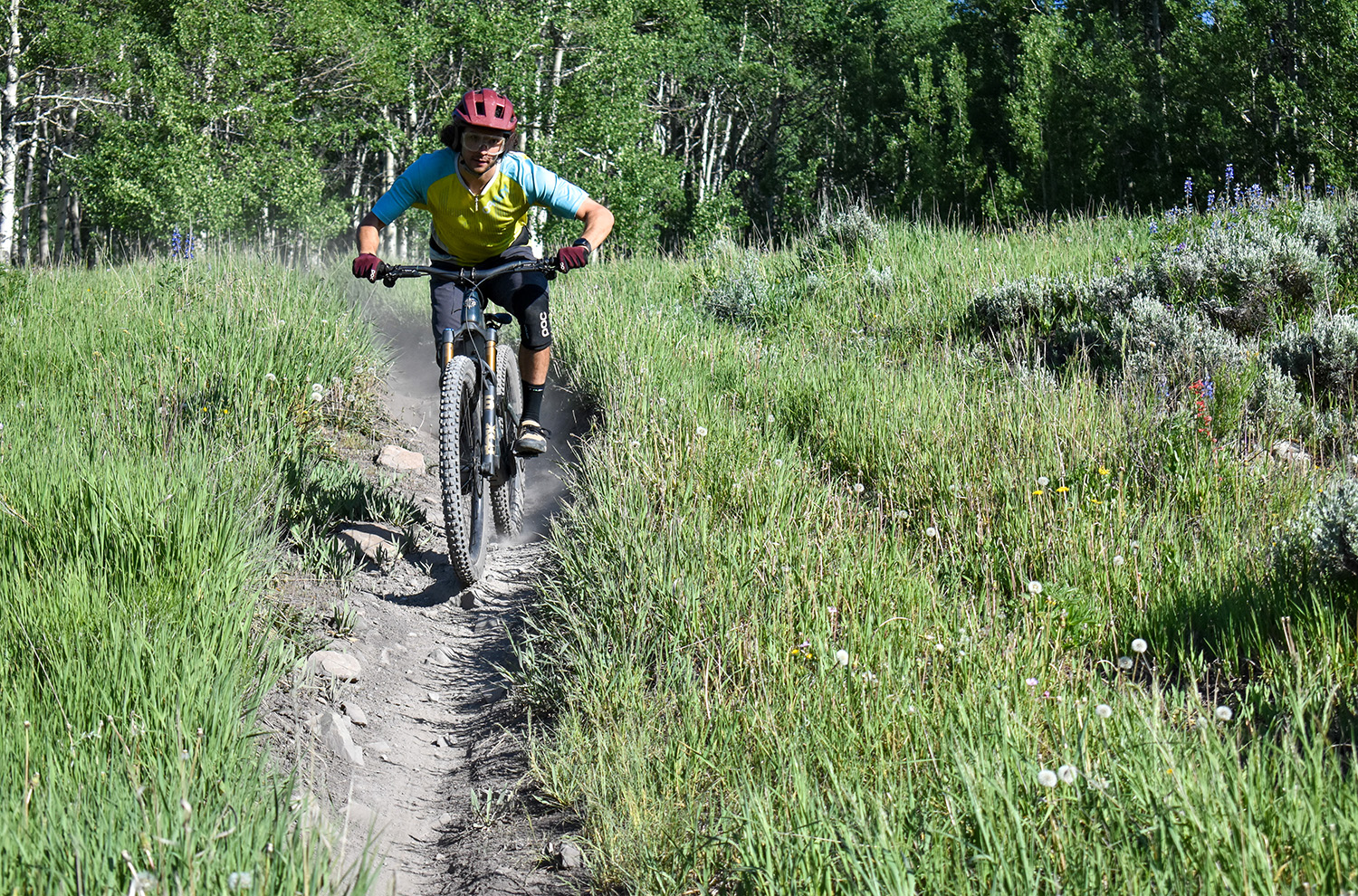
Drive System and Range
My first experience with TQ’s new HPR60 drive system was aboard the MTe, and overall, I’m a big fan. Call it light-assist, call it mid-assist, call it whatever you want, but this motor stands out due to how quiet and natural-feeling it is, all while providing impressive power and range relative to its noise and weight.
HPR60 can produce a (nominal) maximum of 350 watts, and while riding in the highest power mode with the assist percentage turned all the way up to 200%, it’s quite easy to hit that 350 watt peak — and I found that it sometimes exceeded that number, with the highest output I ever saw the screen display being 380 watts. Combined with the power the rider is putting into the pedals, the MTe could cruise at pretty impressive speeds. Granted, this motor system can’t keep up with heavier, full-power ones like Shimano EP801, Bosch CX, or Rocky Mountain Dyname 4.0, and Bosch’s lighter SX system, with its maximum assist of 600 watts, does tend to pull away from HPR60, especially on flatter trails. But, for how quiet and light HPR60 is, I have no complaints about its power.
HPR60 stands out among other lighter motors, and even full-power ones, when it comes to technical climbing. This drive system’s 60 nm of torque helps it crawl up steep, technical sections of trail, all while managing its power output well, reducing rear wheel spinout. I was truly blown away by what I was able to climb aboard the MTe, and I cleaned some tricky climbs that I had not been able to do on other drive systems. While you still have to put quite a bit of effort into the pedals, HPR60 outshines systems with less torque, such as Bosch SX, on the steepest of climbs, allowing you to stay on the bike and make quick time up steep climbs. Some full-power systems are able to do these climbs under less effort, but they are also more likely to lose traction on the way up, and I find myself often going down an assist level or two on full-power bikes to get up a climb, whereas I could leave the MTe in its highest assist level and not worry about losing grip.
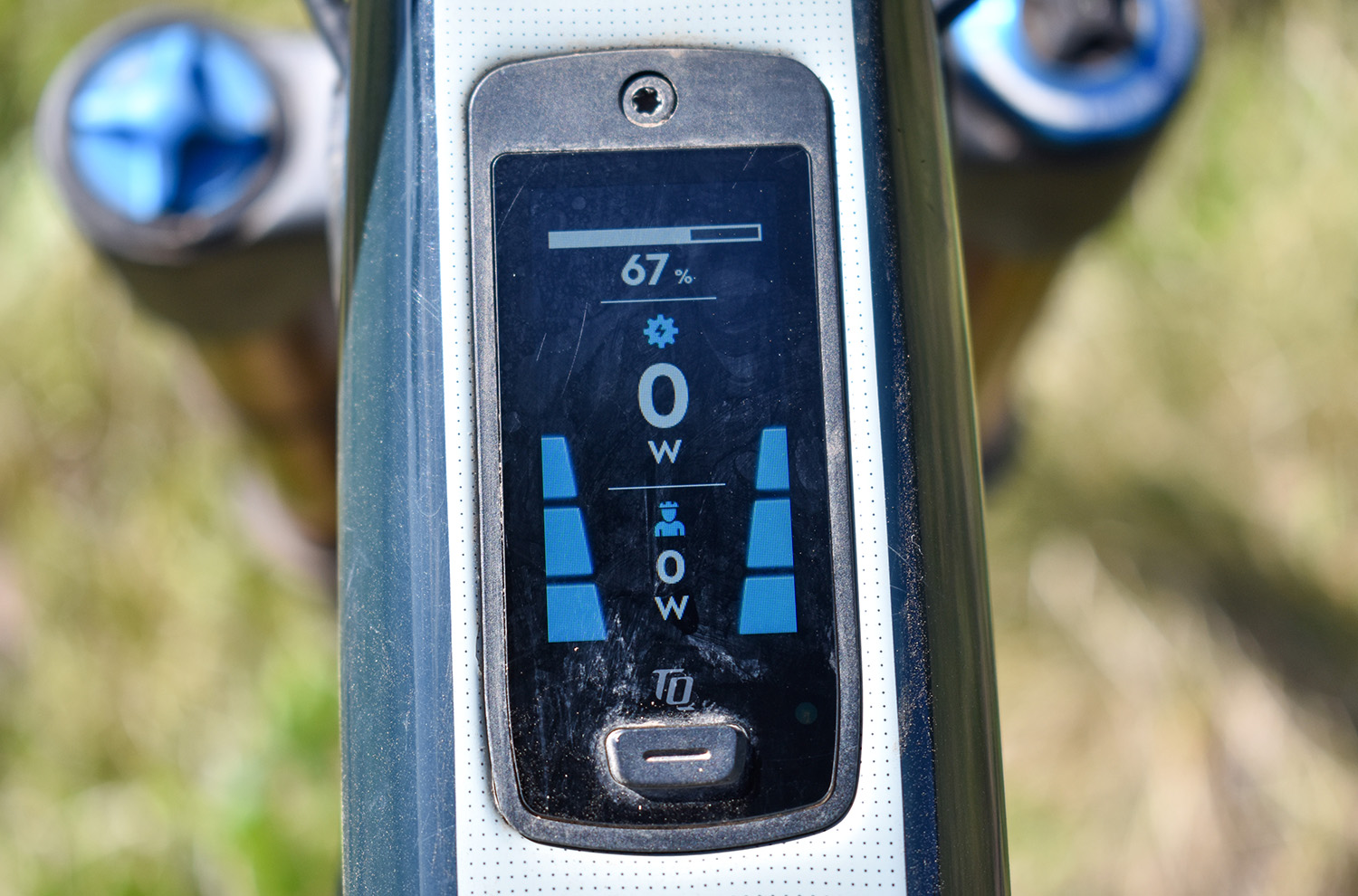
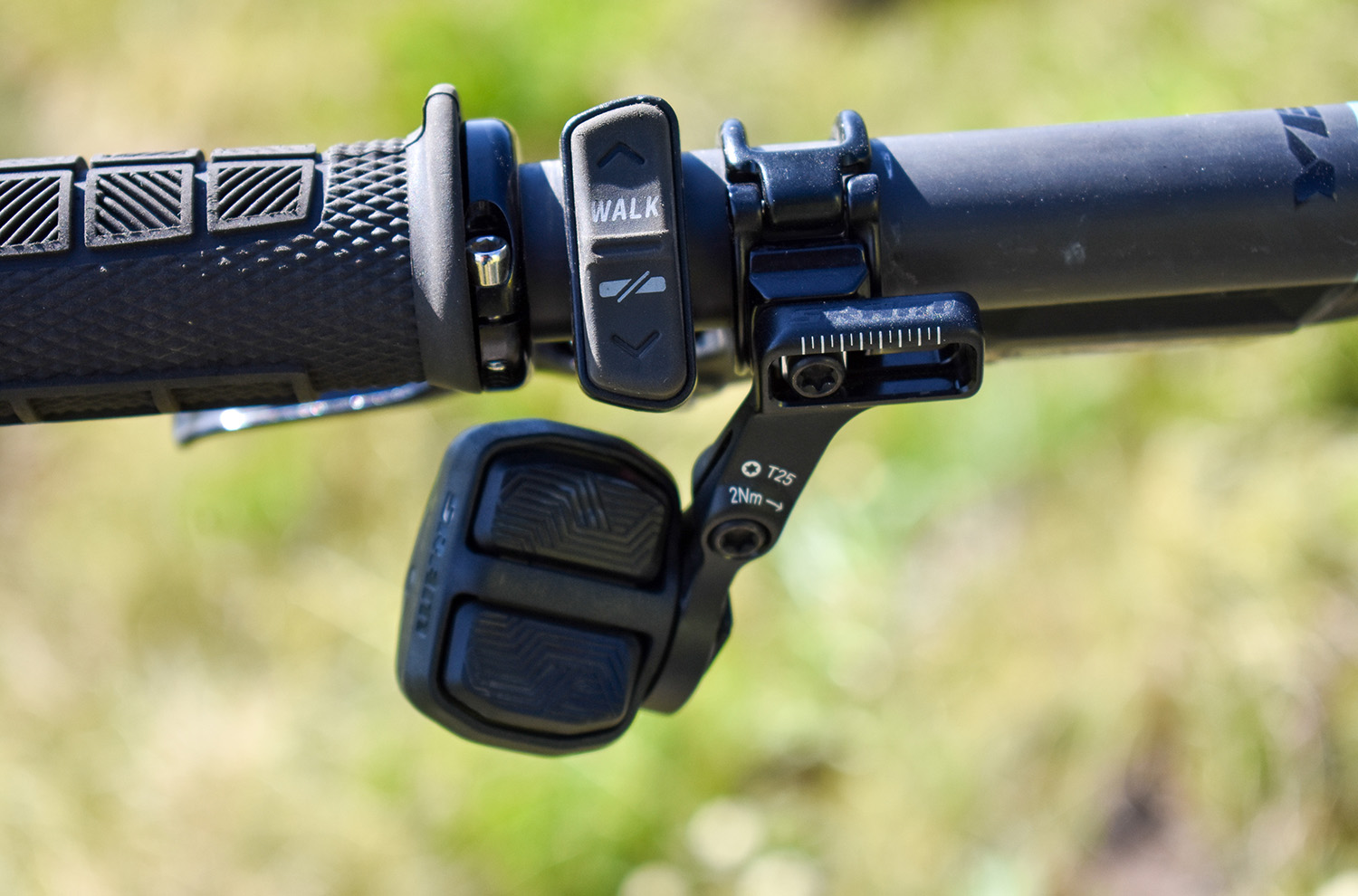
The TQ HPR60 system aboard the MTe also impressed me with its range. The T3 build kit I tested featured TQ’s new 580-watt-hour battery, and compared to the 360-watt-hour battery we tested on the Trek Fuel EXe (with the older HPR50 drive unit), I got much better range and had less range anxiety with the MTe. I found that I was able to ride about 20-25 miles (32-40 km) with 4,000-4,500 feet (1220-1370 m) of climbing aboard the MTe, using the highest assist level the whole time, before draining its battery. On flatter rides with less vert, I was able to get more miles out of the MTe, while steeper rides reduced my mileage a bit. Running the MTe in the lowest and middle assist settings yielded better efficiency, at the cost of some overall speed, of course. With some patience in the lighter assist levels, I could see riders easily getting some 40+ mile rides in on the MTe. Add TQ’s 160-watt-hour range extender into the equation, and you could certainly take the MTe for some big rides.
My only complaints with the TQ HPR60 are the same complaints I had with HPR50. I wish the walk mode were a bit slower, or at least could be adjusted to be. Because of how well this bike climbs technical trails, I only found myself using the walk mode on the most heinous and steep trails. It can be hard to “keep up” with the walk mode here, as it wants to go faster than I can comfortably walk up such steep trails. Additionally, I always got a bit annoyed when I ran the MTe down to 10% battery remaining, where it would then basically force me to use “eco” mode for the rest of the ride. I get why this setting is in place, but being of the “I made this bed, let me lie in it” philosophy when it comes to eMTB range, I would rather TQ allow you to turn this setting off and manage the remaining 58-watt-hours like an adult.
The Build
The MTe was built with some eye toward weight savings, but Yeti gave it a relatively beefy build kit. However, I have no complaints since each burlier component on the MTe has a direct, positive contribution toward what makes the MTe special. Yeti spares almost no luxuries with the X0 AXS Transmission build kit I tested the MTe with. And at $12,650 USD for the kit, you would certainly expect some high-end parts, which you get.
The Fox Factory suspension front and back was certainly a highlight here. I am a big fan of the new Float 36 fork, and really enjoyed it aboard the MTe. Additionally, I thought the Float X shock performed well and was nicely tuned to the MTe, with enough adjustment to please the vast majority of riders. I also continued to enjoy SRAM’s X0 Eagle AXS Transmission drivetrain on the MTe, and I believe that it pairs wonderfully with eMTBs, as I find myself shifting under power more often on a bike with a motor. SRAM’s Maven Silver brakes were also a great fit for the MTe, and always felt powerful enough, even on long, steep descents in which I was not giving the brakes even a moment to rest. While I’ve found Mavens to be a bit too powerful on other bikes, the MTe has so much traction that they are a great fit here.
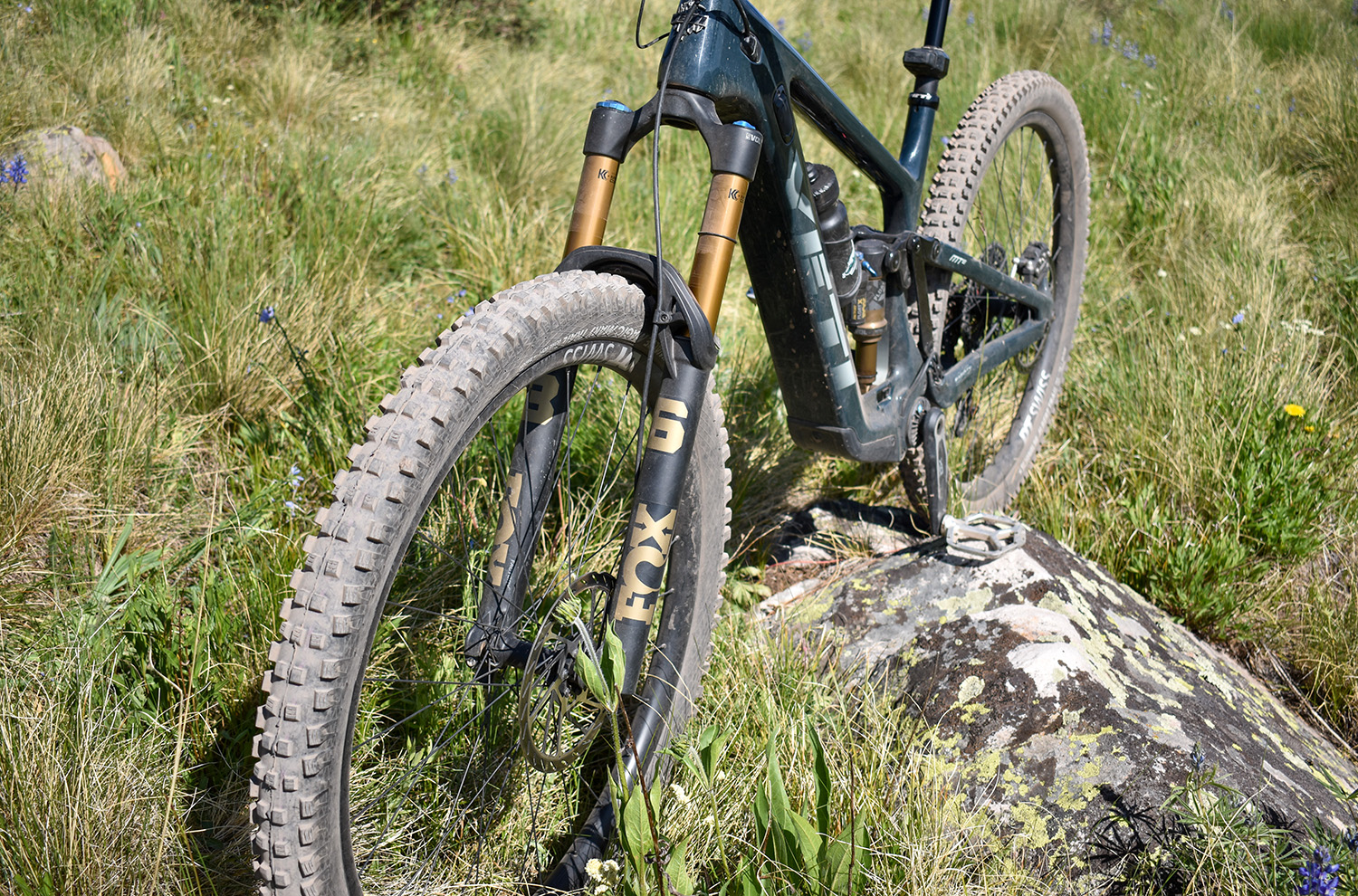
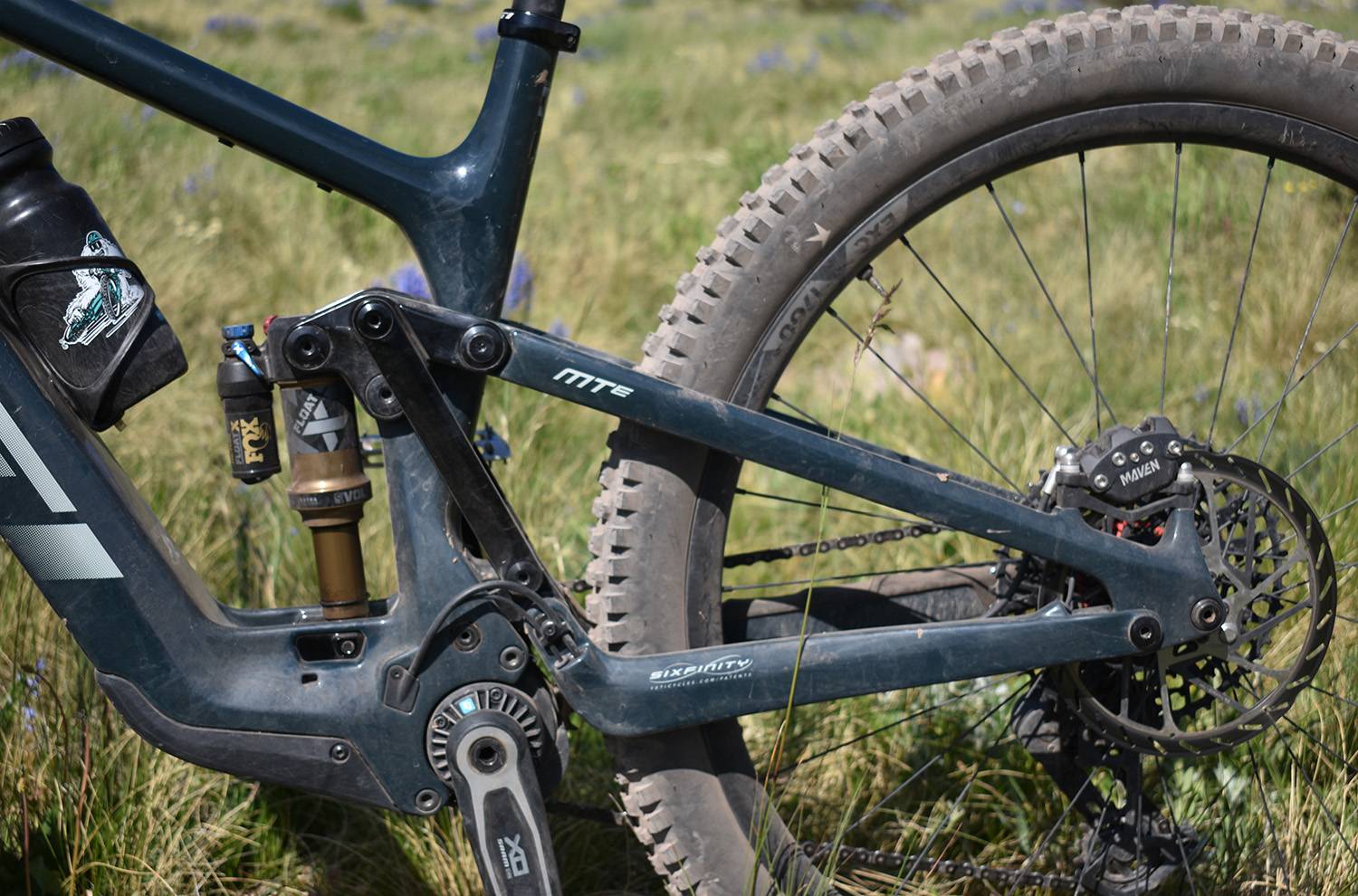
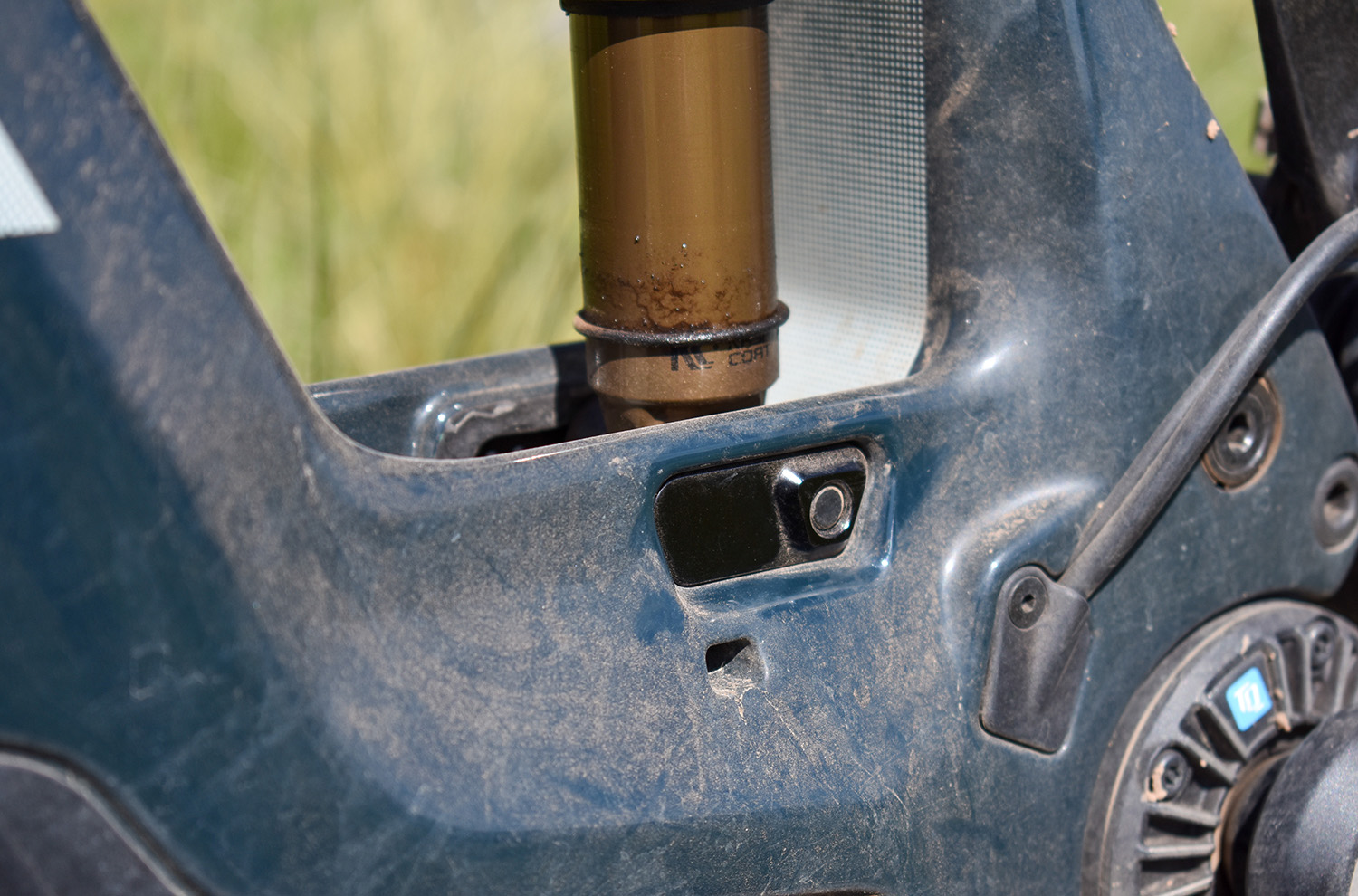
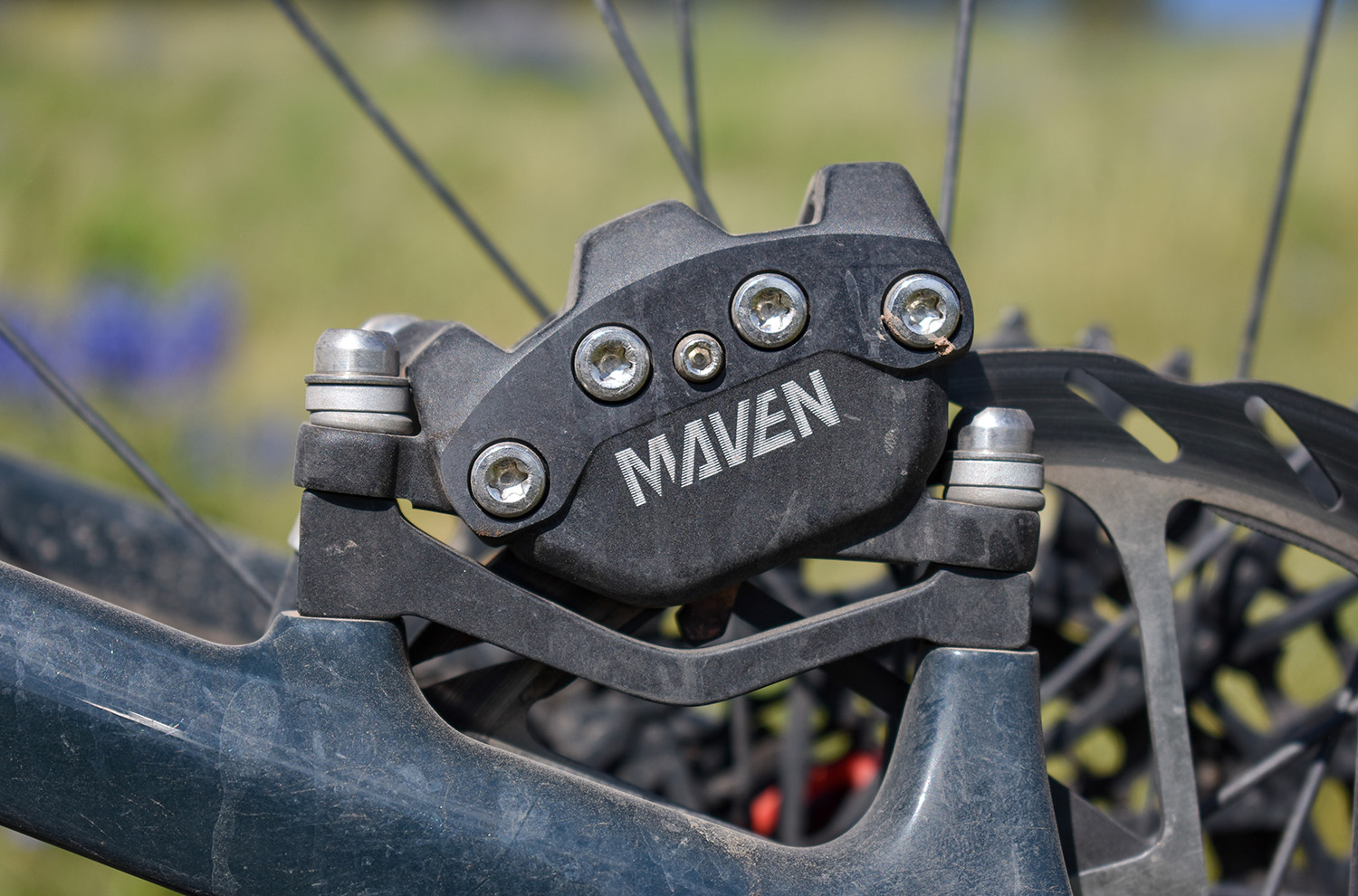
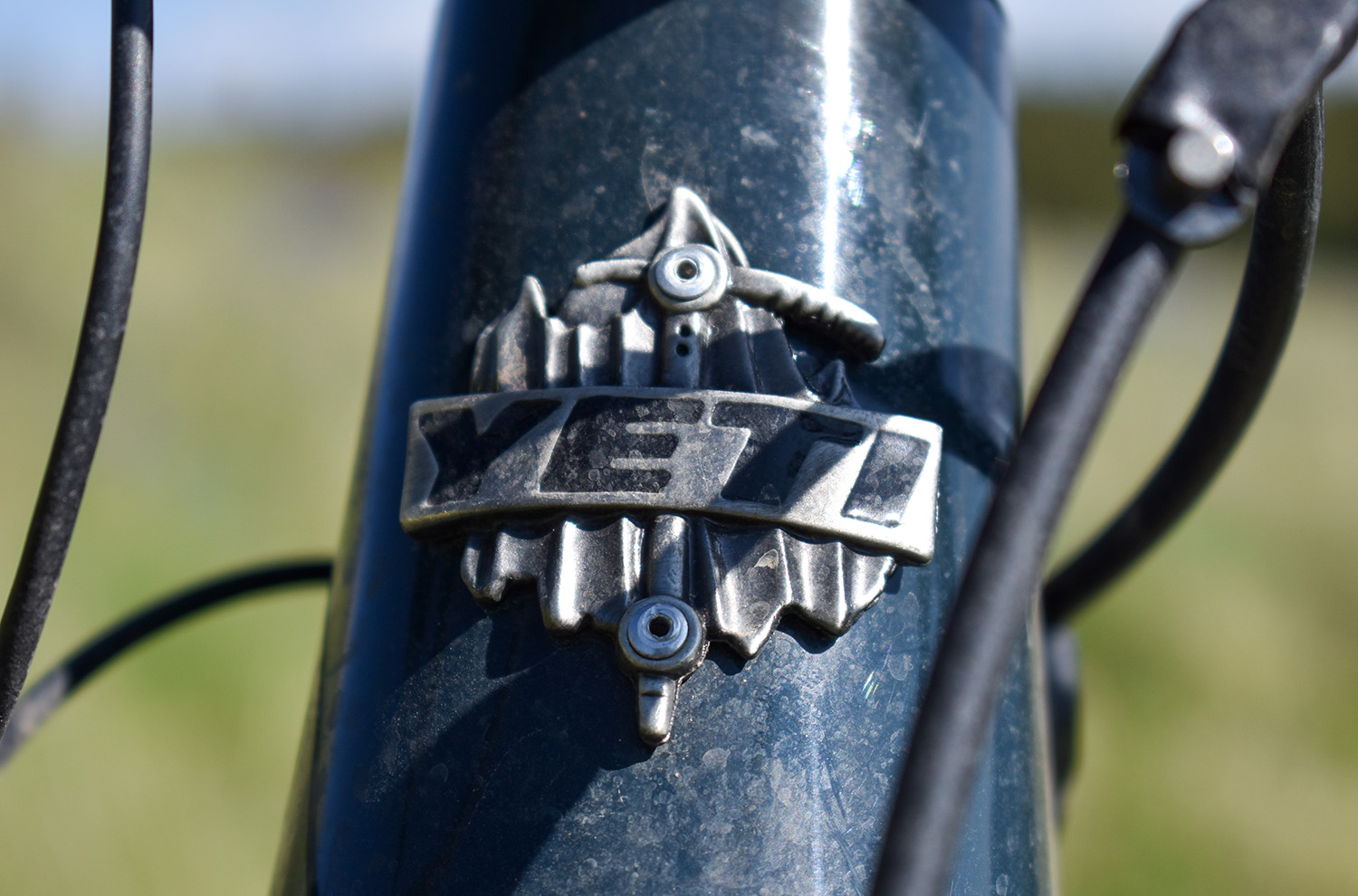
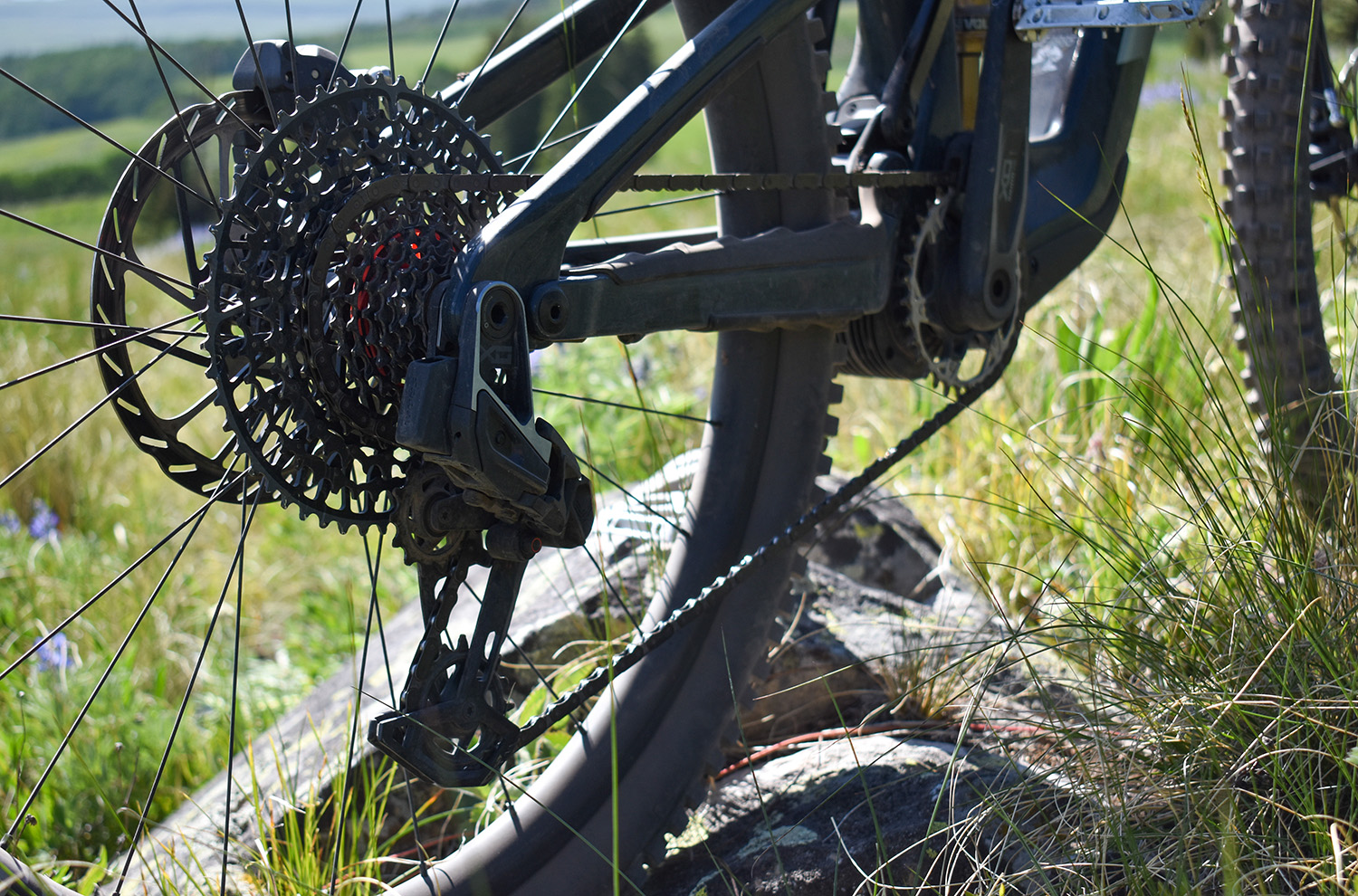
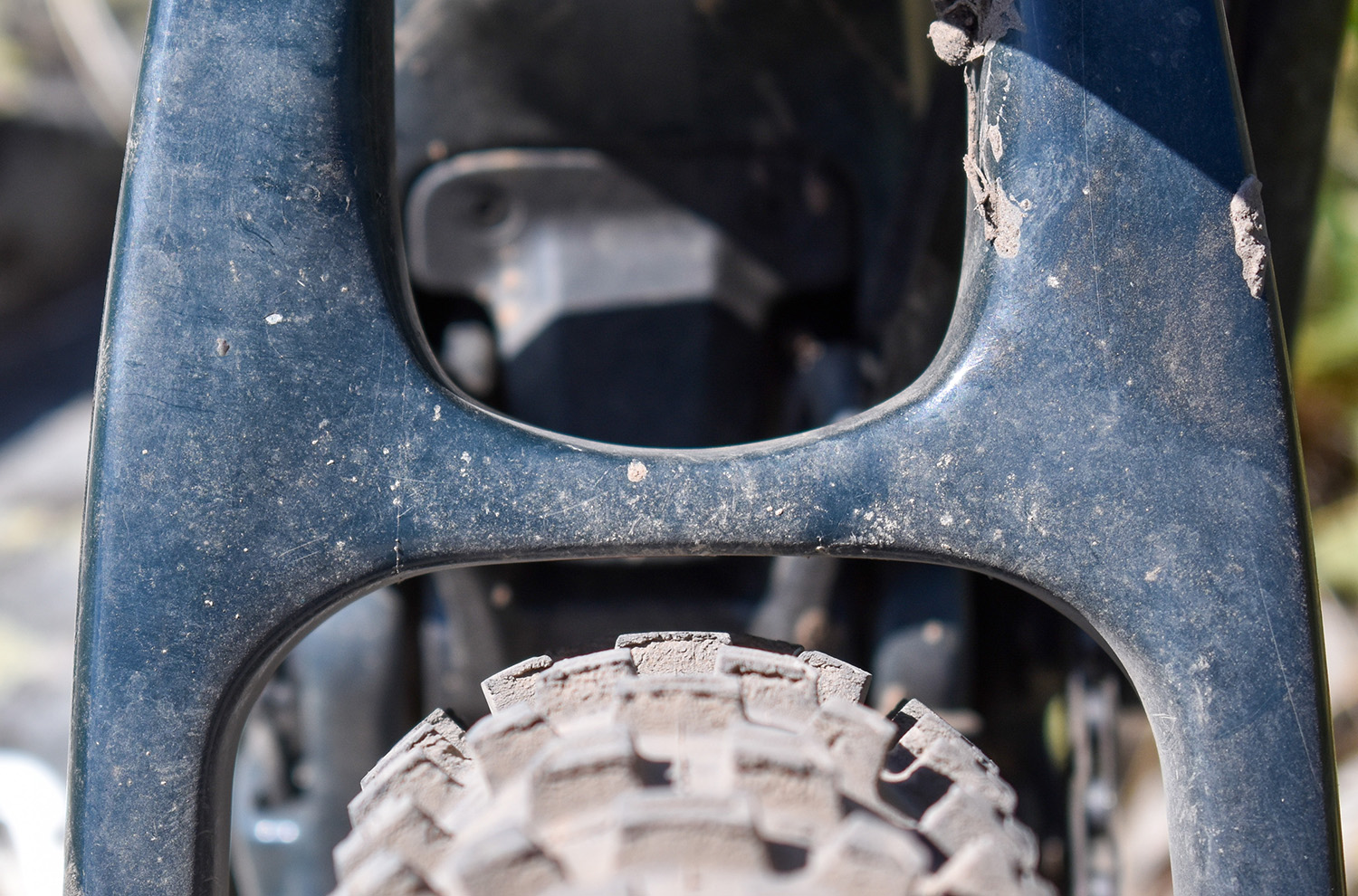
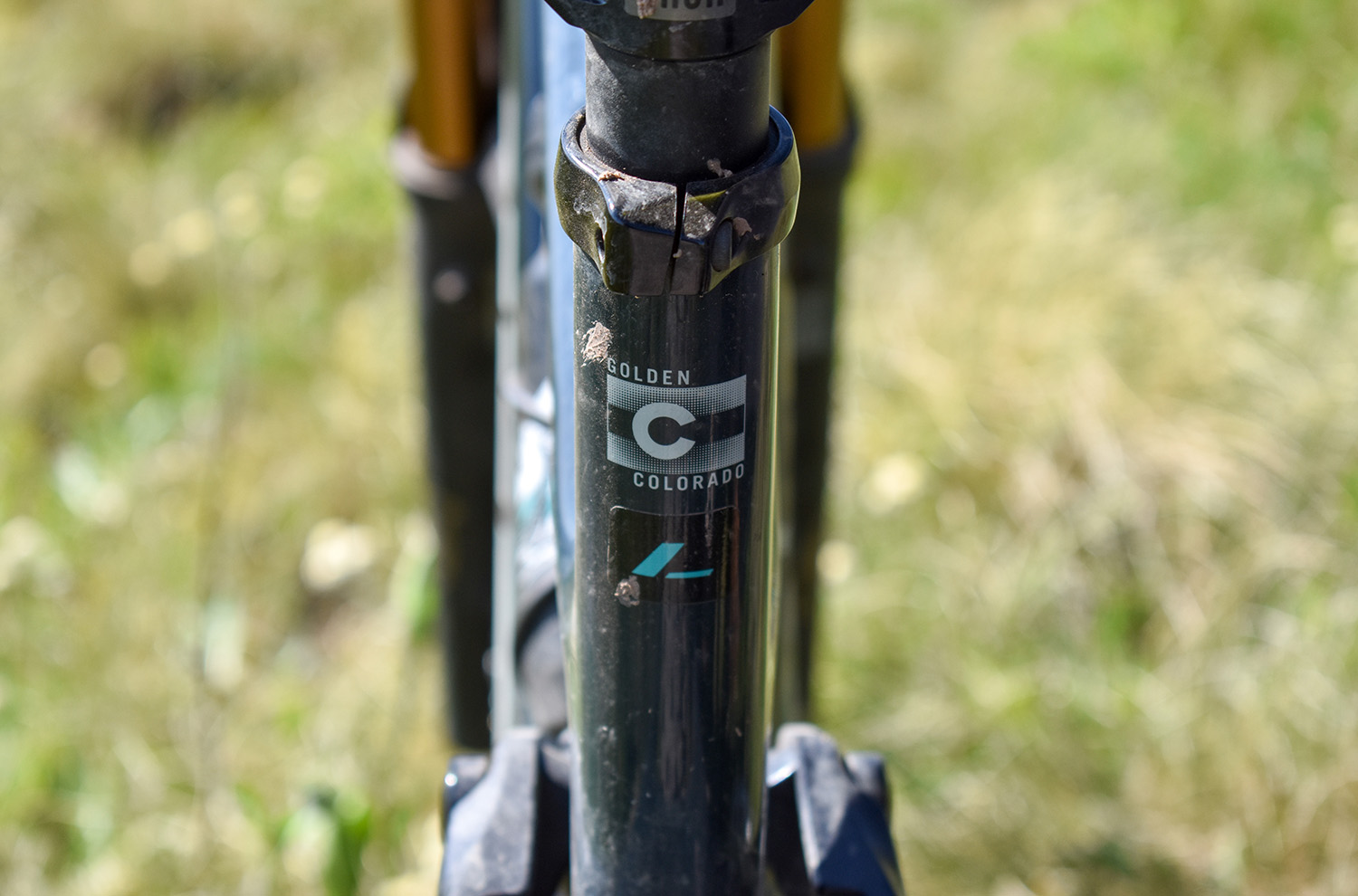
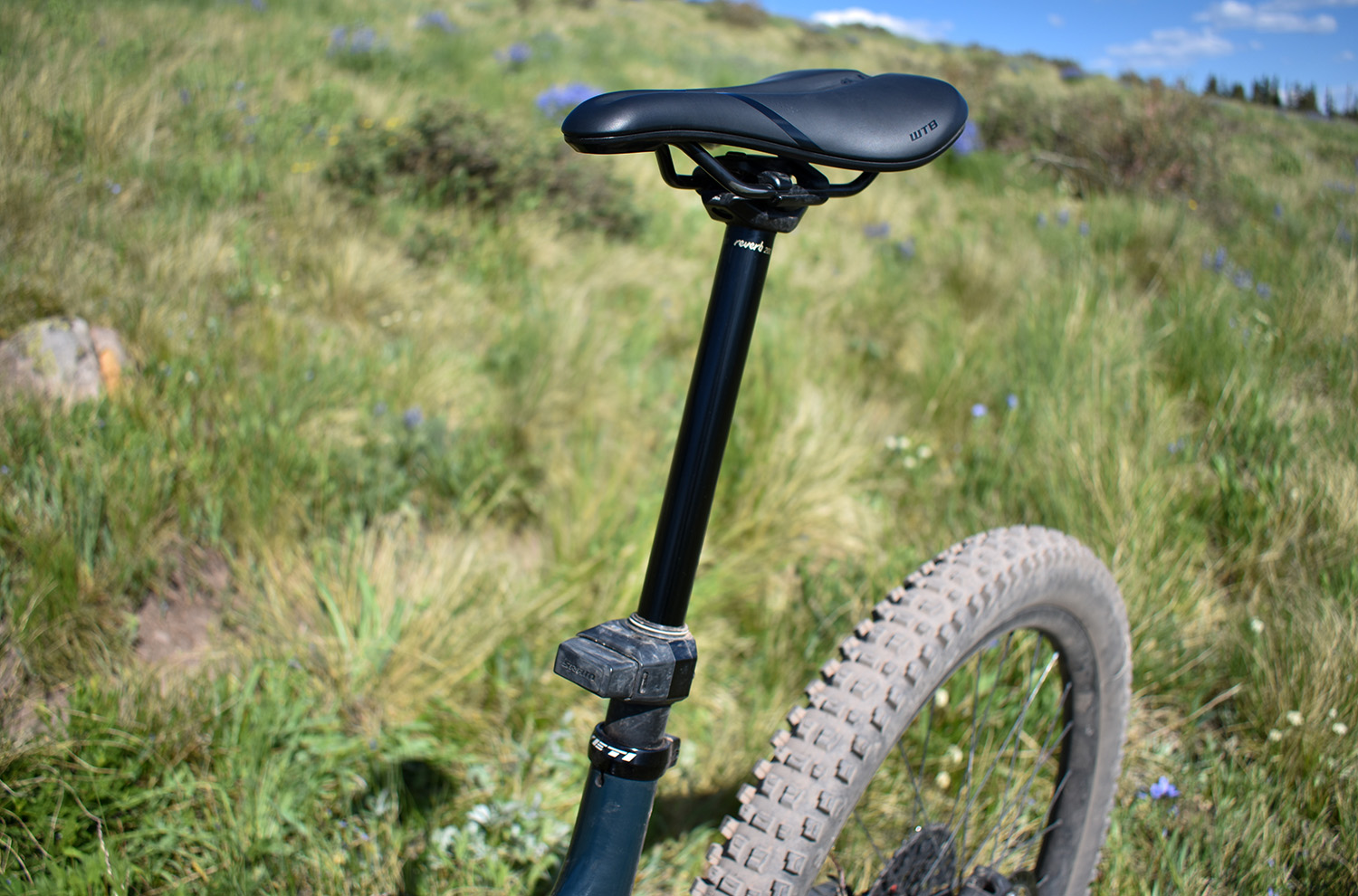
Schwalbe’s Magic Mary Trail Pro 2.5 Ultra Soft and Albert Trail Pro 2.5 Soft radial tires were also a highlight on the MTe. This was my first time using these tires, and man, do they feel like a cheat code. I did have to run higher pressures than normal, 28 psi up front and 30 psi in the rear, but these compliant tires provided loads of traction. They can feel a bit squirmy on hardpack, but given that I was almost exclusively riding trails that ranged from slightly loose to full-on loam or moondust, they never behaved unpredictably under me.
The DT Swiss EXC1700 Carbon 30mm wheelset on the MTe was also a highlight, offering precise handling without a harsh feel. Plus, they stayed tensioned and true throughout my entire test period, which is always a bonus. The SRAM Reverb AXS B1 dropper on every build is also a great touch, and while I don’t really have any issues with cable-actuated droppers, I did enjoy the consistency of the electric remote to the Reverb AXS dropper.
Who’s It For?
The Yeti MTe stands out for how well it handles rough, steep, and technical descents for its class. Riders looking for something that hugs the ground and provides confidence-inspiring traction on descents will certainly enjoy what the MTe has to offer. At the same time, the MTe is an excellent climber, and its lightweight TQ HPR60 motor is quiet and natural-feeling, which is more reminiscent of the unpowered MTB experience than a full-power eMTB. The MTe surely makes long, steep climbs much easier from a technical perspective, but it also forces you to work a bit harder to get up them than a full-power eMTB would.
So why not get a lightweight eMTB with more travel? While the MTe doesn’t feel as playful as bikes with more responsive suspension designs in its class, it still feels more rewarding when pumping through mellow terrain with a more dynamic style than more descending-focused bikes like the Mondraker Dune XR. For how well it pedals, climbs, and traverses mellow terrain, the MTe has no business being as capable on the descents as it is — and that’s what makes this bike really special.

Bottom Line
The MTe has perhaps the most bottomless-feeling 145 mm of rear suspension I’ve ever felt on a mountain bike, motorized or not. Combine that with capable geometry and a burly build kit, and you have a relatively lightweight All-Mountain eMTB that can tackle just about anything you throw at it, both up and downhill. Folks looking for the lightest, most playful eMTBs and those looking for the most downhill-capable ones likely have better options on either end of the spectrum, but for riders who want an eMTB that isn’t a total tank but also rarely ever holds them back, the MTe is a great option.
Deep Dive Comparisons
BLISTER+ members and those who purchase our Digital Access Pass can check out our Deep Dive comparisons linked below. Get our Digital Access Pass to view all our Deep Dives and Flash Reviews, or become a BLISTER+ member today to get access to that and a LOT more, including the best worldwide Outdoor Injury Insurance, exclusive deals and discounts on skis, personalized gear recommendations from us, and much more.

Deep Dive: Yeti MTe
We compare the Yeti MTe to the Yeti SB140, Propain Sresh SL, Pivot Shuttle SL/AM, Pivot Shuttle AM, Pivot Shuttle SL, Norco Fluid VLT 130, Santa Cruz Heckler SL, Trek Fuel EXe Aluminum, Mondraker Dune XR, Cannondale Moterra SL, and Rocky Mountain Instinct Powerplay.
Blister’s Flash Reviews and Deep Dives are accessible to those who purchase one of our paid subscriptions
To get our comprehensive Deep Dives and our initial, unfiltered reports on new gear, become a member and receive many other services, deals, and discounts.
If you’re already an active member, please log in.
(If you’re already logged in and a member in good standing and seeing this message in error, please refresh this page in your browser.)

